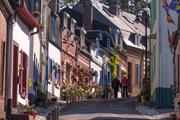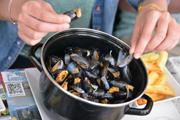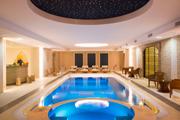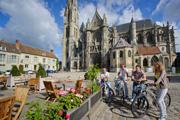
to authentic
French experiences
#04


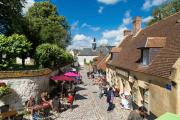
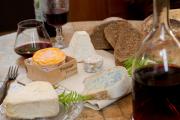
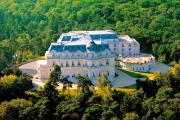
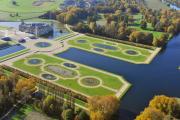
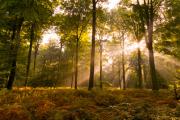
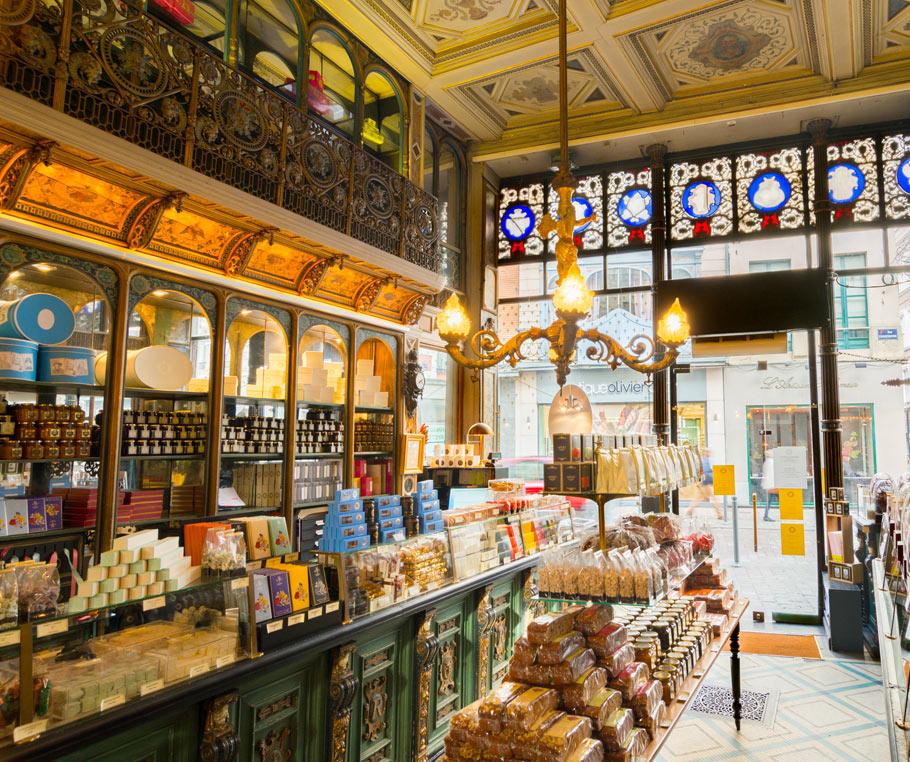
"Fantastic shopping in Lille includes retro boutiques Nostalgie, La Mère Veille, Vintage Store and Funny Vintage, and the cosmopolitan Wazemmes Market."
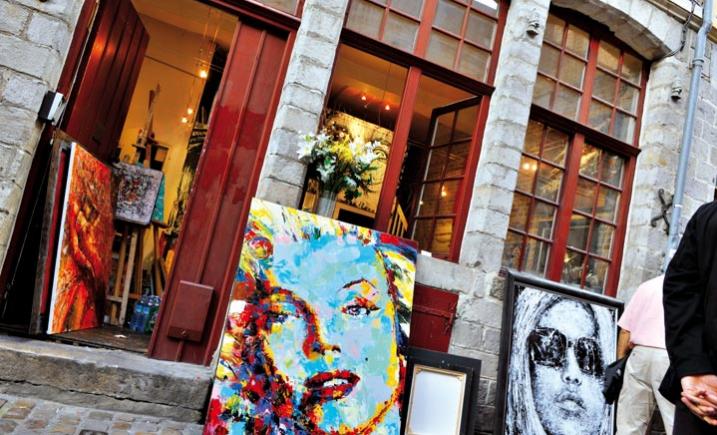 Curious art spaces are hidden around every corner
© Alphand
Curious art spaces are hidden around every corner
© Alphand
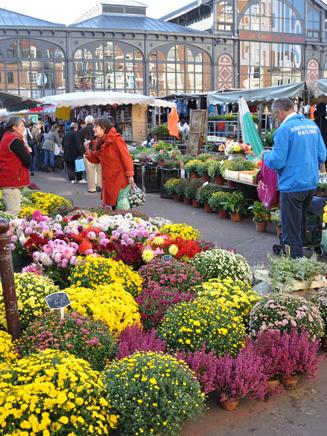 The cosmopolitan Wazemmes market
© Nord Tourisme
The cosmopolitan Wazemmes market
© Nord Tourisme
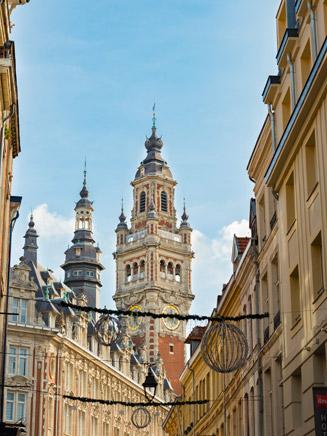 Meander the laneways and discover a city rich in heritage and unique architecture
© X. Renoux
Meander the laneways and discover a city rich in heritage and unique architecture
© X. Renoux
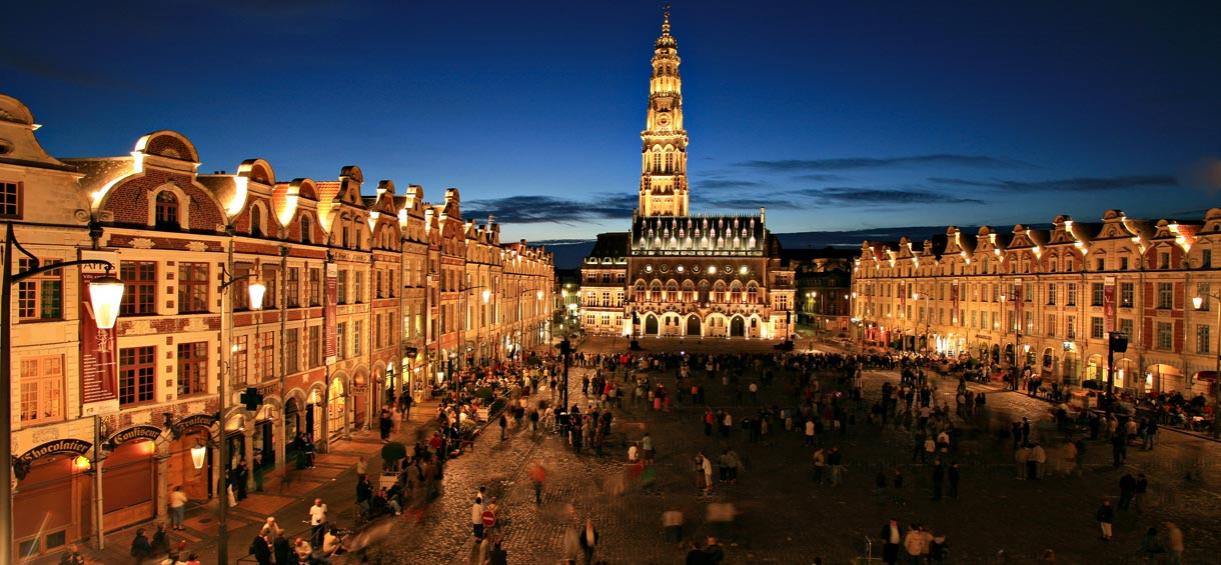
The Charms of Arras.
History Seen From On High
Enjoy an atmospheric aperitif at the foot of an UNESCO-listed belfryTake a break from everyday routine and grey skies with a couple’s break in this romantic French city just a short hop from the Channel ferry ports, rich in Flemish architecture and atmosphere.
Just an hour from Calais by motorway,
Arras is the perfect place for a couple’s break that gives you the chance to slow down and spend some quality time together while learning new things and appreciating authentic culture and impressive architecture.
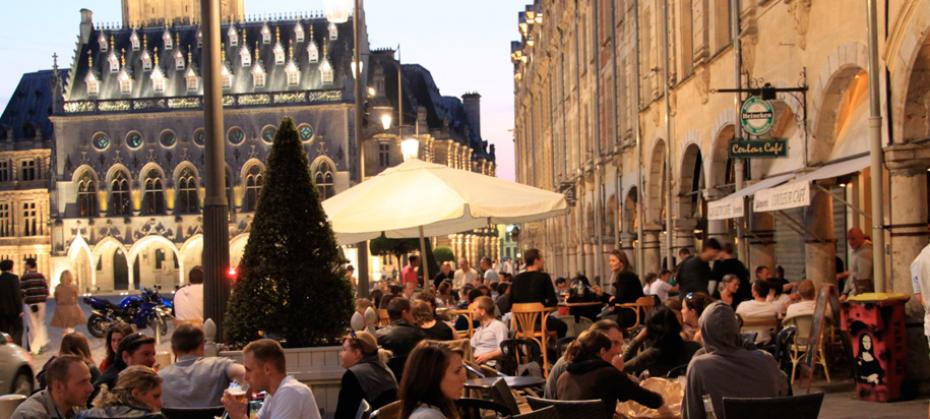 The best place for a French apéritif is sitting under the UNESCO belfry in Arras
© Cituation-et-ensemble-D.Cordonnier
The best place for a French apéritif is sitting under the UNESCO belfry in Arras
© Cituation-et-ensemble-D.Cordonnier
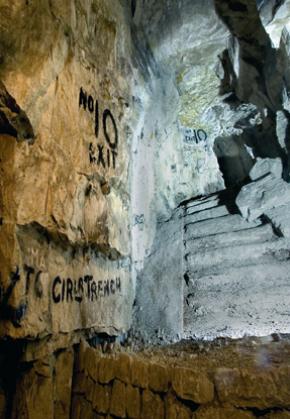 Explore the Wellington tunnels 'home' to allied troops in 1917
© Cituation ensemble
Explore the Wellington tunnels 'home' to allied troops in 1917
© Cituation ensemble
Arras’s exquisite porcelain – produced by local artisans 1770s – makes for a perfect gift or souvenir to take home."
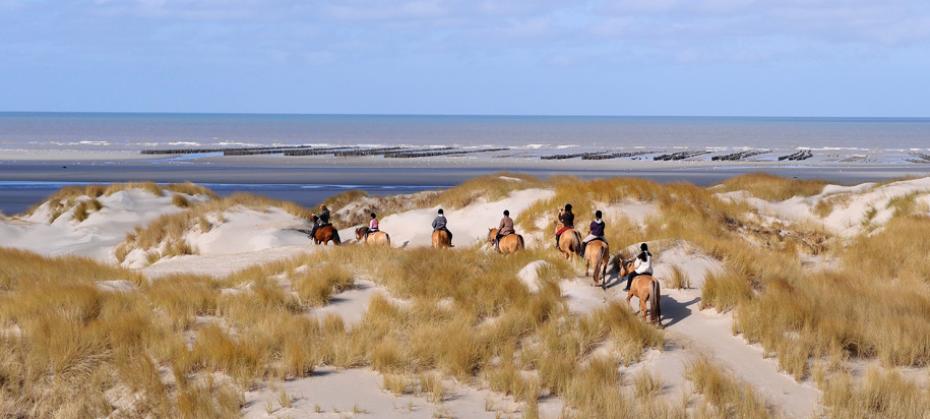 Enjoy rinding a local Henson pony in the great outdoors
© CRT Picardie/F. Cocquet
Enjoy rinding a local Henson pony in the great outdoors
© CRT Picardie/F. Cocquet
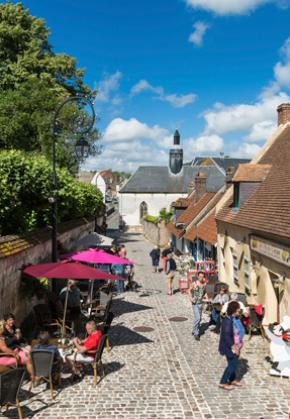 Experience the French art de vivre in the charming village of Montreuil sur mer
© B. Bremer
Experience the French art de vivre in the charming village of Montreuil sur mer
© B. Bremer
Enjoy being by the sea sharing activities including guided walks in the Baie d’Authie, Baie de Somme and Deux-Caps, sand-yachting, tennis and golf in chic Le Touquet, and riding local Henson horses. Worlds Apart The charms of Le Touquet Paris-Plage are well worth discovering. A lovely French town, designed by the British, has great beaches, French dining and spas (not to mention the golf). ‘British Tours’ of sites with UK associations are available, including 1920s villas, and summer ’Nuit Baroques’ celebrating art de vivre in dance, theatre and opera. Inland, Montreuil-sur-Mer with its cobbled streets and ramparts was so-named because the sea once ran up the estuary to this spot.
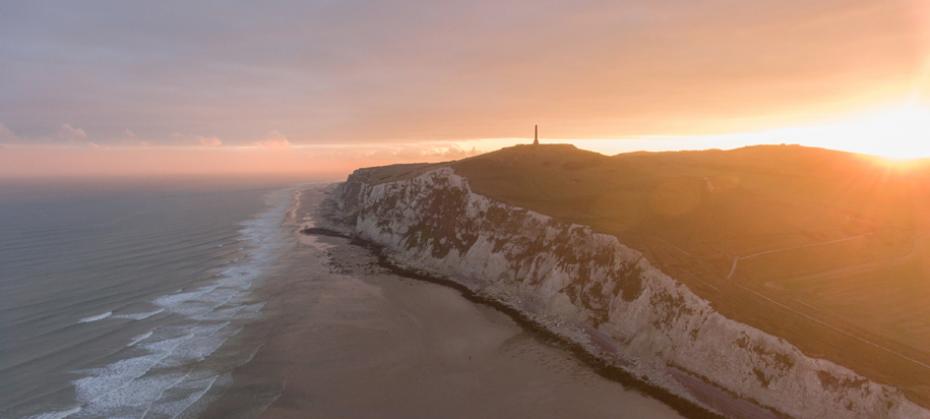 Sunset at the edge of the world at the 2 Caps, sometimes you can see the coast of England
© N. Bryant
Sunset at the edge of the world at the 2 Caps, sometimes you can see the coast of England
© N. Bryant
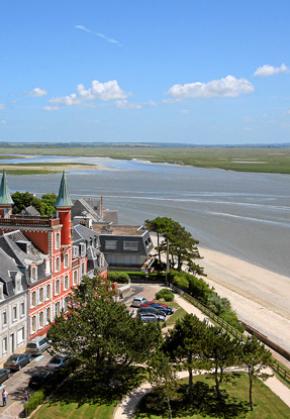 Room with a view in the Somme Bay
© Aérostudio
Room with a view in the Somme Bay
© Aérostudio
Hilltop
Cassel:
Northern France’s Most Flemish Town with sweeping viewsA short hop from the Channel, Cassel has a romantic atmosphere and laid-back charm that make it perfect for couples looking to explore historic Flanders and experience some French art de vivre.
Less than an hour from Calais, Cassel is a unique place to immerse yourself in another culture, learn about Flemish architecture and enjoy views over the rest of French Flanders. Must-sees are the Grand’Place with its gabled houses with brightly painted wooden shutters, the Kasteel Meulen or Moulin de Cassel, one of around 20 windmills that dotted the area in the Middle Ages, several private châteaux, and the Musée Départemental de Flandre, with displays on local history plus English audio-guides. For the best countryside views, head for Kasteel Meulen, Estaminet T’Kasteel’hof or the Châtellerie de Shoebecque’s restaurant. A passionate advocate of local life, Manuel de Quillacq is proprietor of both T’Kasteel Hof (a typical Flemish estaminet or bistro, serving comfort food in a cosy setting) and the remarkable Jardin du Mont des Récollets, inspired by historic Flemish gardens and including topiary and an area inspired by Brueghel’s Hunters in the Snow.
Made by slow-cooking meat in brown ale with a bit of sugar, smoked bacon, herbs and spices this rich, delicious casserole is the best way to immerse yourself in Flemish flavours. The best part? It’s served with ginger bread toast, and the spices combined with the beef stew is a match made in heaven.
get a rare opportunity to watch the Ronde Européenne de Géants Portés in Steenvoorde just east of Cassel. This UNESCO-listed parade held every six years or so features giant carnival figures from all over Europe, the most famous among them Reuze Papa.
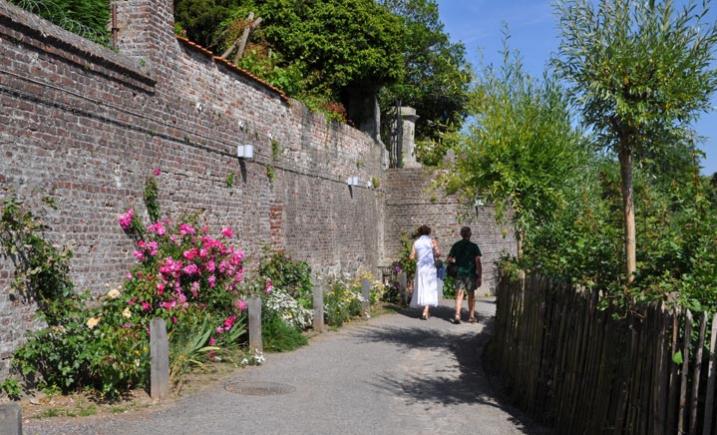 You’ll feel a million miles away in the cobbled laneways of Cassel
© Nord Tourisme - O. Delory
You’ll feel a million miles away in the cobbled laneways of Cassel
© Nord Tourisme - O. Delory
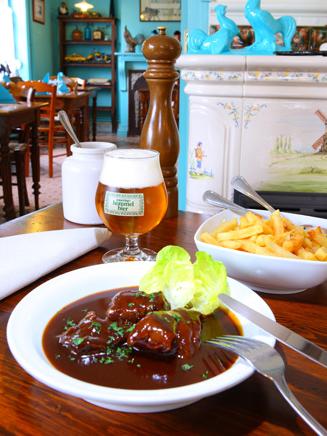 One of the local dishes, the carbonade, deliciously rich and indulgent
© S. Dhote Nord Tourisme
One of the local dishes, the carbonade, deliciously rich and indulgent
© S. Dhote Nord Tourisme
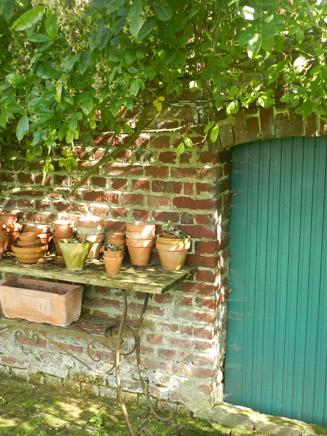 Discover hidden gems around every corner
© CRT NPDC
Discover hidden gems around every corner
© CRT NPDC
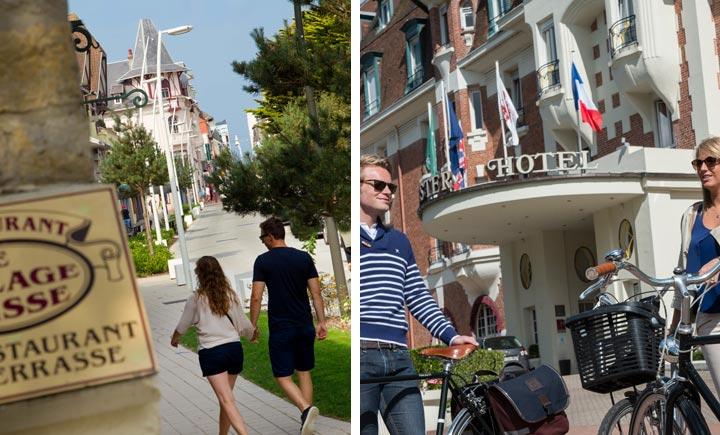 The chic town is perfect for wandering and catching up on shopping
© AS Flament, JD Hestin
The chic town is perfect for wandering and catching up on shopping
© AS Flament, JD Hestin
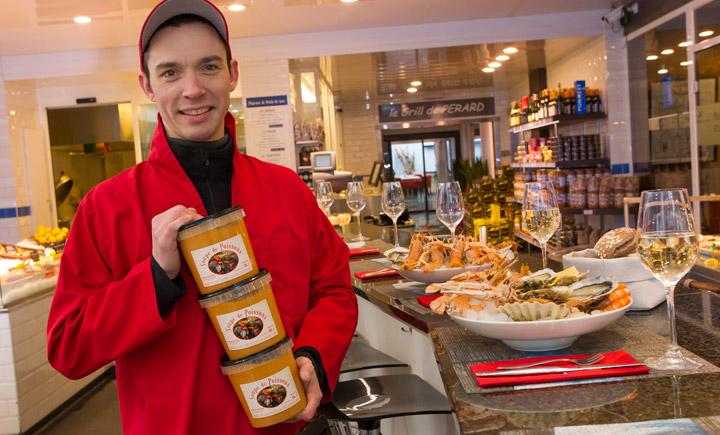 From the ocean to the plate, sample an appetising seafood platter
© AS Flament
From the ocean to the plate, sample an appetising seafood platter
© AS Flament
Break your journey in the chic resort town of Le Touquet Paris-Plage combining natural sites and outdoor activities with the chance to be pampered and enjoy French art de vivre – all a short hop from the ferry ports.
Popular with Noël Coward and the ‘smart set’ in the 1920s, Le Touquet-Paris-Plage remains a stylish destination packed with history and heritage, including Art Deco villas. Its English associations can be discovered on a ‘British Tour’. The Great Outdoors Le Touquet is very much about the natural environment too, as you will find out on a walk with a nature guide, a bike-ride in the surrounding pine forest or a horse-ride in the Estuaire de la Canche. Along the way you’ll spot migrating birds and even seals, basking on the sand banks. And the Great Indoors This is also the place to recuperate from the road with a tranquil night’s sleep, perhaps in Hôtel Barrière Le Westminster with its Pavillon restaurant presided over by Michelin-starred chef William Elliott and its lovely spa with 1930s murals. As befits such an upscale hotel, you’re assured a substantial breakfast and secure parking.
Practical Information
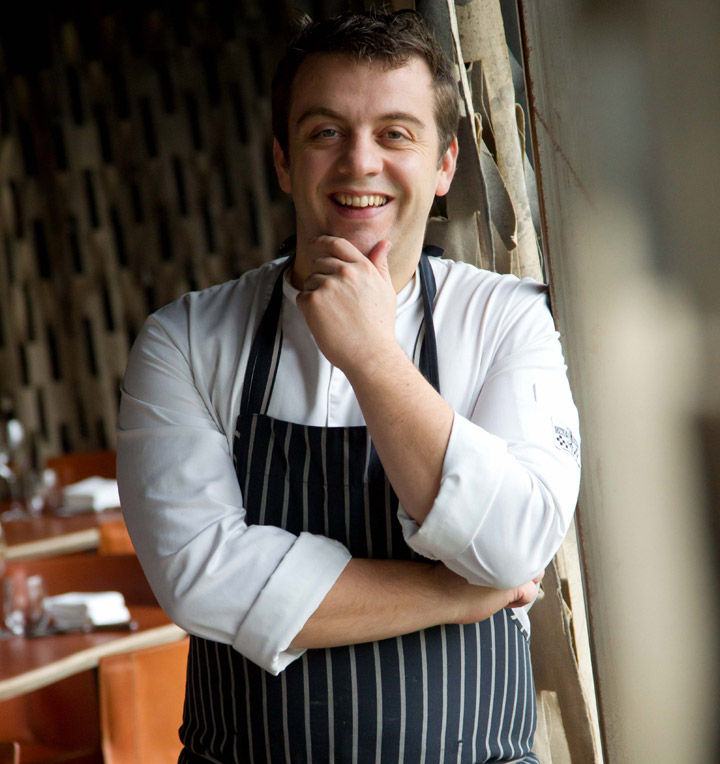 One of France's stars, 2 Michelin stars an hour from Calais. Alexandre Gauthier, La Grenouillère
© AS Flament
One of France's stars, 2 Michelin stars an hour from Calais. Alexandre Gauthier, La Grenouillère
© AS Flament
With 20 Michelin-starred chefs and many restaurants listed in the influential Gault et Millau guides, Hauts-de-France is a paradise for foodie couples, who can enjoy both traditional and innovative cuisine while exploring the region’s sights. These include Deux-Caps, the Baie de Somme (among the world’s loveliest bays), the Château de Chantilly with its antique painting collection second only to that of the Louvre in Paris, the Musée du Louvre-Lens, and the city of Lille. And luxurious places to stay are close at hand too.
At the helm of Auberge de la Grenouillère in La Madelaine-sous-Montreuil, Michelin-starred Alexandre Gauthier shot to fame when he served local Licques chicken to heads of state including Barack Obama at Paris’ COP21 conference.
Other Michelin-starred names to look out for are Florent Ladeyn at the Auberge du Vert-Mont in Boeschepe, Nicolas Pourcheresse at Hôtel Clarance in Lille, Ludovic Colpart at the Auberge du Pont de Rethondes, and Marc Meurin, with restaurants in Lille, Lens and Busnes – including Hôtel Le Château de Busnes with its gourmet cookery courses, available in English.
Chefs get out and about, selecting ingredients from market stalls, market gardeners and producers, plus seafood in the Somme Bay.
Then there are other huge talents such as Steven Ramon at Rouge Barre in Lille, Sébastien Porquet at La Table des Corderies in Saint-Valery-sur-Somme, and Tony Lestienne at La Matelote in Boulogne-sur-Mer, known for his seafood.
Low Food Miles, High Standards of Presentation These chefs insist on using high-quality seasonal produce. Some incorporate rare ingredients such as saffron grown in the Baie de Somme, as championed by Porquet and Ludovic Colpart at the Auberge du Pont de Rethondes.
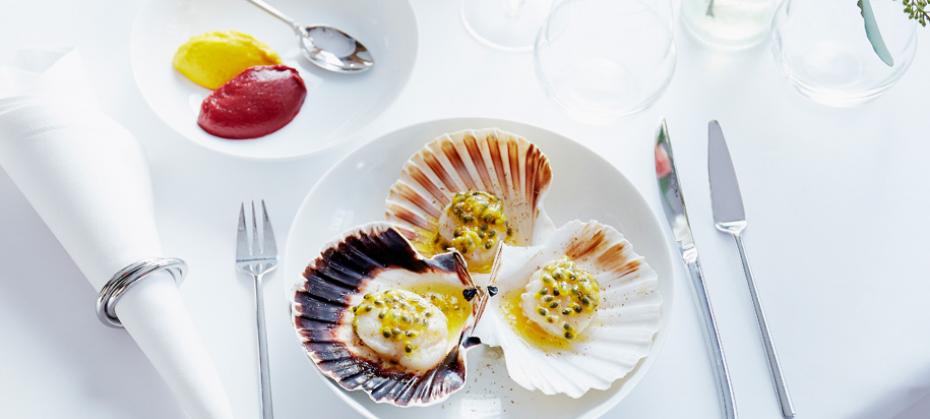 Haute gastronomy at the Hotel Clarance in Lille, just 90 minutes from London
© Hotel le Clarance Lille
Haute gastronomy at the Hotel Clarance in Lille, just 90 minutes from London
© Hotel le Clarance Lille
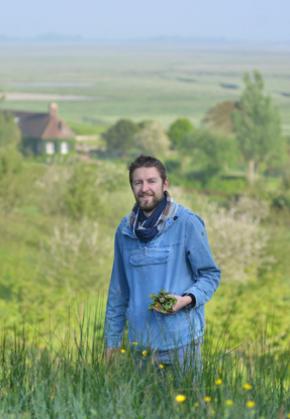 Low Food Miles and high-quality seasonal produce
© N.Bryant
Low Food Miles and high-quality seasonal produce
© N.Bryant
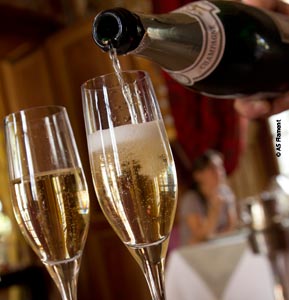 Many local products you’ll sample are also available to buy and bring home, including Philippe Olivier cheeses, served in the best restaurants but also available in his fromageries in Boulogne-sur-Mer, Lille, Lens and elsewhere. The same goes for champagne (10% of French output comes from Hauts-de-France) and fine wines.
Many local products you’ll sample are also available to buy and bring home, including Philippe Olivier cheeses, served in the best restaurants but also available in his fromageries in Boulogne-sur-Mer, Lille, Lens and elsewhere. The same goes for champagne (10% of French output comes from Hauts-de-France) and fine wines.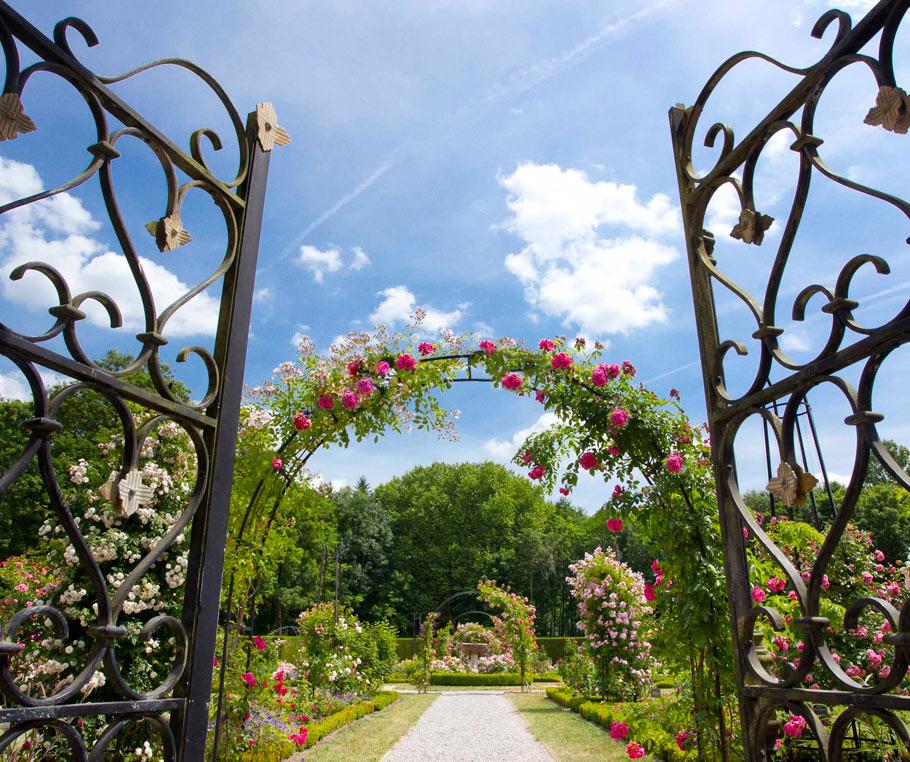
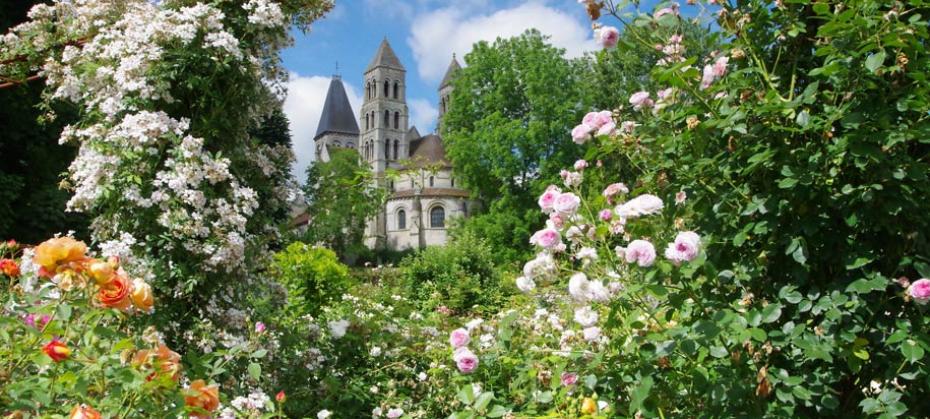 Visit a stunning rose garden dedicated to David Austin at Morienval
© A.GARCIA-ARdOise
Visit a stunning rose garden dedicated to David Austin at Morienval
© A.GARCIA-ARdOise
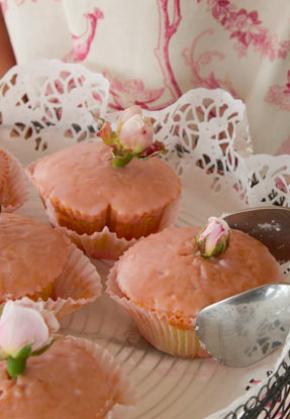 Spoil yourself at the rose garden tea rooms at the Palais de Compiègne
© AS Flament
Spoil yourself at the rose garden tea rooms at the Palais de Compiègne
© AS Flament
A tour of Northern France’s rose gardens should also take in the Château Fort de Rambures (50 minutes south of Valloires), the stunning gardens at Séricourt (in the Pas-de-Calais department) and the village of Gerberoy (one of the most beautiful villages in France) with its medieval streets blooming with rose bushes (in the Oise department and near A16 motorway). Near the A1 motorway, there’s also the Abbaye de Chaalis, the Palais de Compiègne and the Abbaye de Morienval. Charming places to stay and/or eat en route include the Le Clos du Moulin near Valloires, Les Rêveries dans la Théières near Chaalis (a B&B with an organic tea-room), the Michelin-starred Auberge à la Bonne Idée near Morienval and the tea-room in the rose garden of the Palais de Compiègne.
Practical information
Enjoy some innovative French cuisine based on edible flowers while discovering Northern France’s botanical gardens and picking up some gardening tips along the way.
While enjoying classic French cuisine is one of the great pleasures of holidays in Northern France, the region is also home to a new wave of innovative chefs working with local flowers and plants.
Nowhere is this more in evidence than at the Table du Jardinier at the Jardins de Valloires near the french coast. Here, exciting dishes using plants from the botanical gardens include a salad of ground ivy and Bayonne ham, pike perch with nasturtiums and crayfish pesto, and crême brûlée with sweet woodruff. Before or after lunch, wander the botanical gardens and glean some ideas for improving your own garden back home.
In Saint-Valery-sur-Somme, on the french coast, the stylish Table des Corderies in the chic hotel of the same name serves creative and traditional french food including foie gras with seaweed, scallops with foraged herbs, and a dessert of saffron mousse. The chef picks up himself its flowers in the Somme Bay or at the Herbarium. Stay the night and offer you a spa weekend breaks in its sea-view spa. Or in nearby Le Crotoy, head for Auberge de la Marine, where recipes featuring local plants – some foraged – include duck tenderloin braised with sea buckthorn, in a light sauce of carotte des sables (carrots grown in sand) with orange.
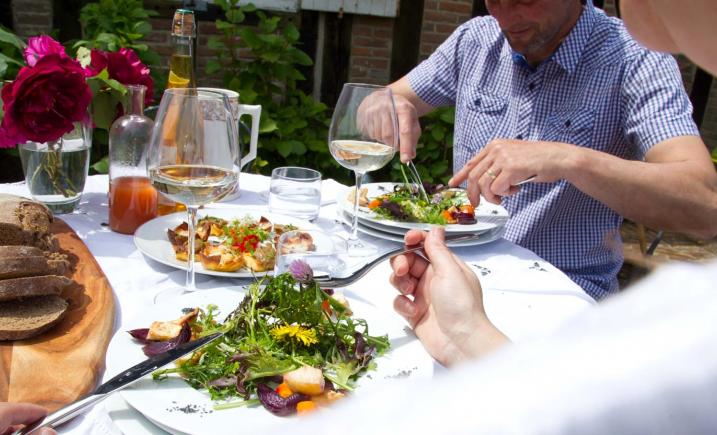 Tempting delights inspired by nature at the IF restaurant in Gerberoy
© AS Flament
Tempting delights inspired by nature at the IF restaurant in Gerberoy
© AS Flament
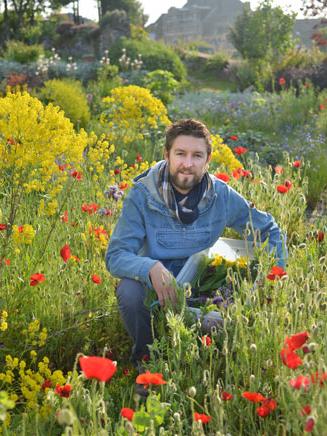 Chef Porquet from Les Corderies is inspired by seasonal produce
© N.Bryant
Chef Porquet from Les Corderies is inspired by seasonal produce
© N.Bryant
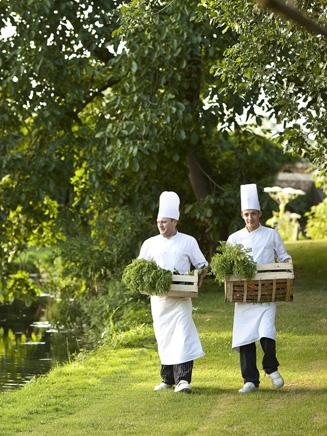 Couldn't be fresher at La Chartreuse du Val Saint Esprit
Couldn't be fresher at La Chartreuse du Val Saint Esprit
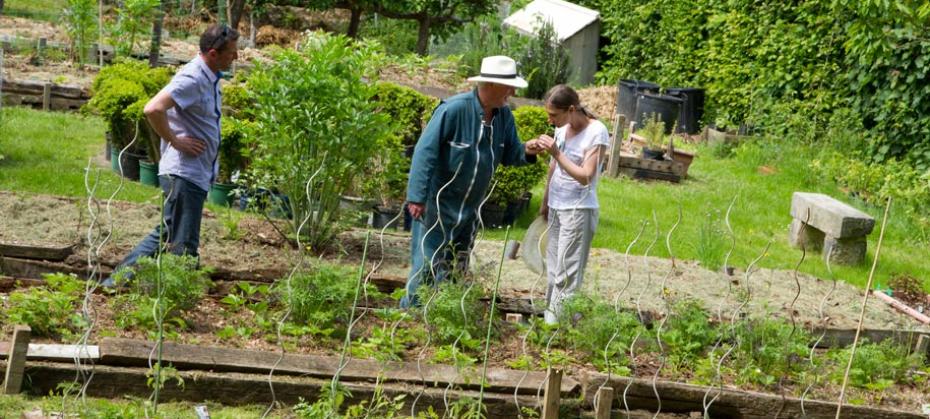 The chef Pierre Hugonnet at the Jardins des Ifs shares his gardening tips
© AS Flament
The chef Pierre Hugonnet at the Jardins des Ifs shares his gardening tips
© AS Flament
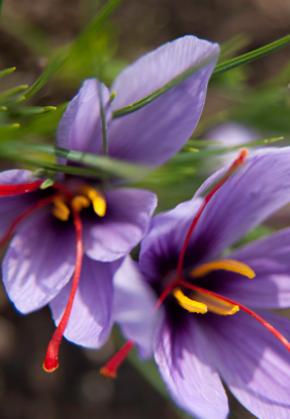 Saffron from the Somme Bay is served in gastronomic restaurants
© B.Teissedre
Saffron from the Somme Bay is served in gastronomic restaurants
© B.Teissedre
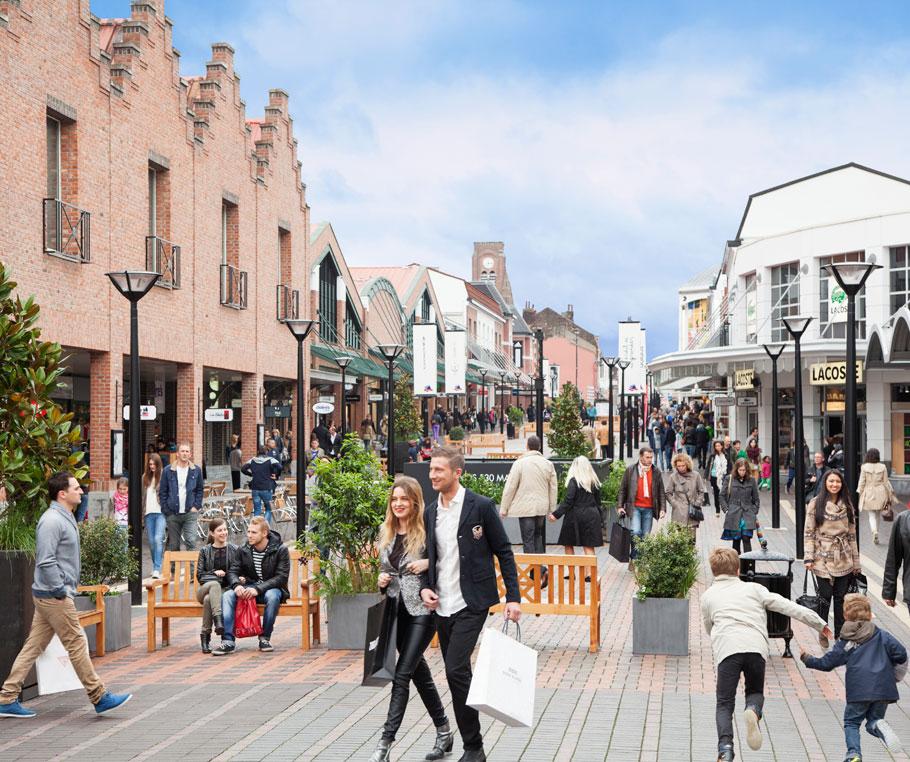
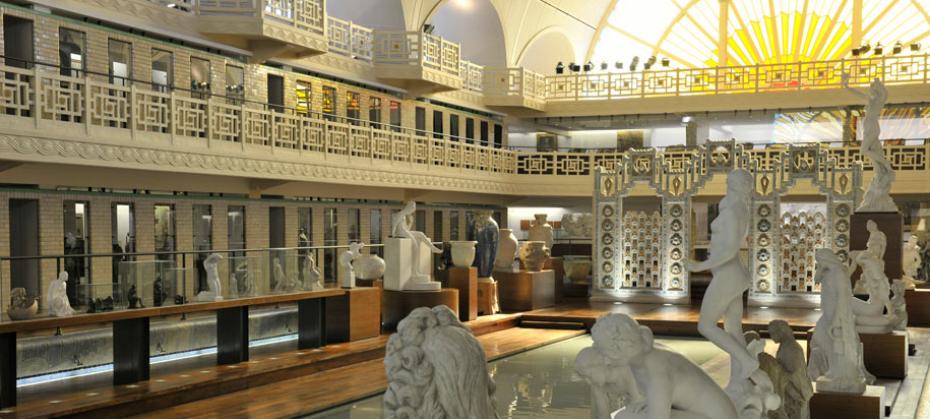 La Piscine museum, a hot spot for all culture vultures
© A.Leprince
La Piscine museum, a hot spot for all culture vultures
© A.Leprince
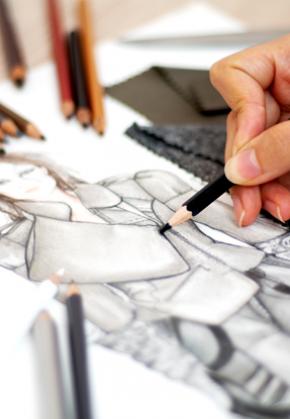 Roubaix, "très à la mode"
© Istock
Roubaix, "très à la mode"
© Istock
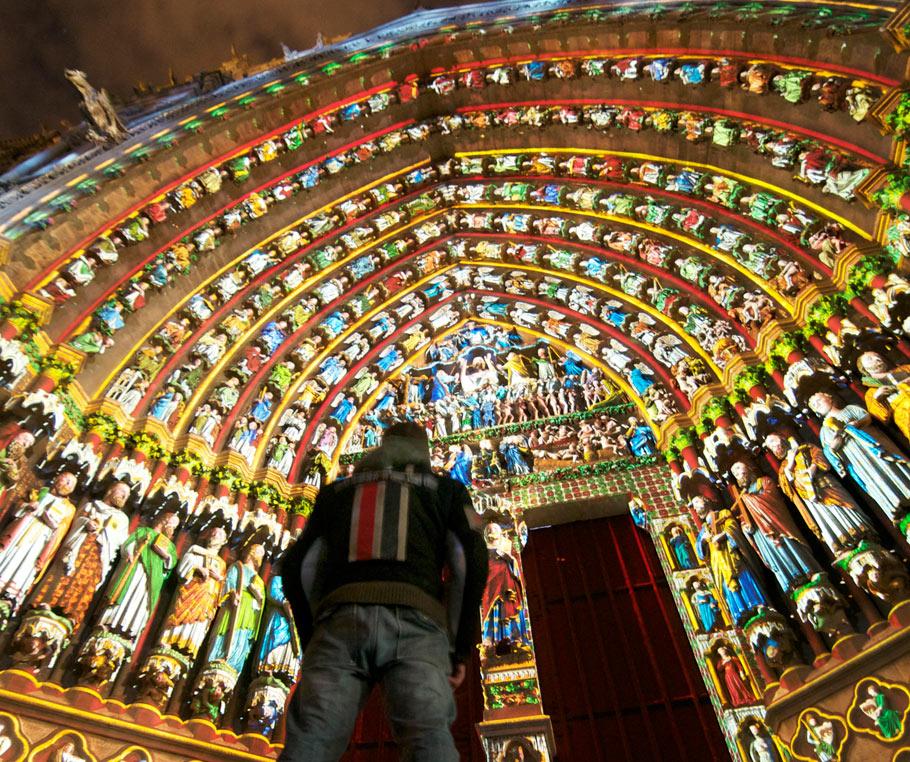
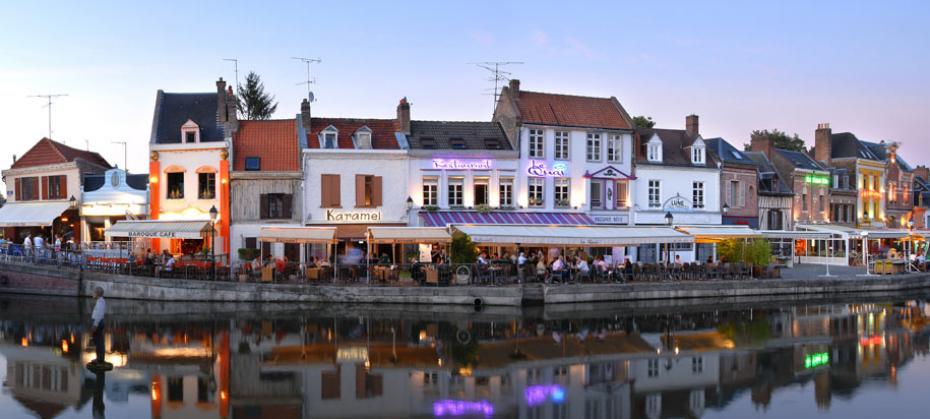 Dining with a view (a UNESCO cathedral no less)
© G. Crochez
Dining with a view (a UNESCO cathedral no less)
© G. Crochez
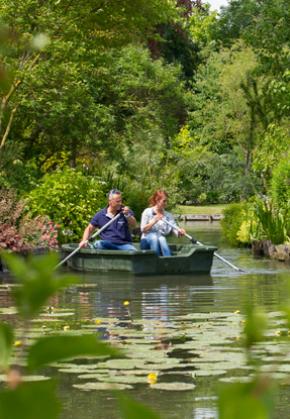 Life in the slow lane, discover Amiens network of floating gardens
© AS Flament
Life in the slow lane, discover Amiens network of floating gardens
© AS Flament
Accompanied by narration and religious music, "Cathédrale en Couleurs" depicts the famous sculptures of medieval saints, apostles and other figures on the western facade in the colours they were painted during the Middle Ages.
Amiens has an array of delightful places to stay and great restaurants for all budgets. Unique to the city, Ché Mouch dans les Hortillonnages is a handful of wooden cabins provided with punts to explore the surrounding Hortillonnages (market gardens on a network of tiny canals). Restaurant Leu Duo in the Saint-Leu district serves classic and modern French cuisine.
Practical Information
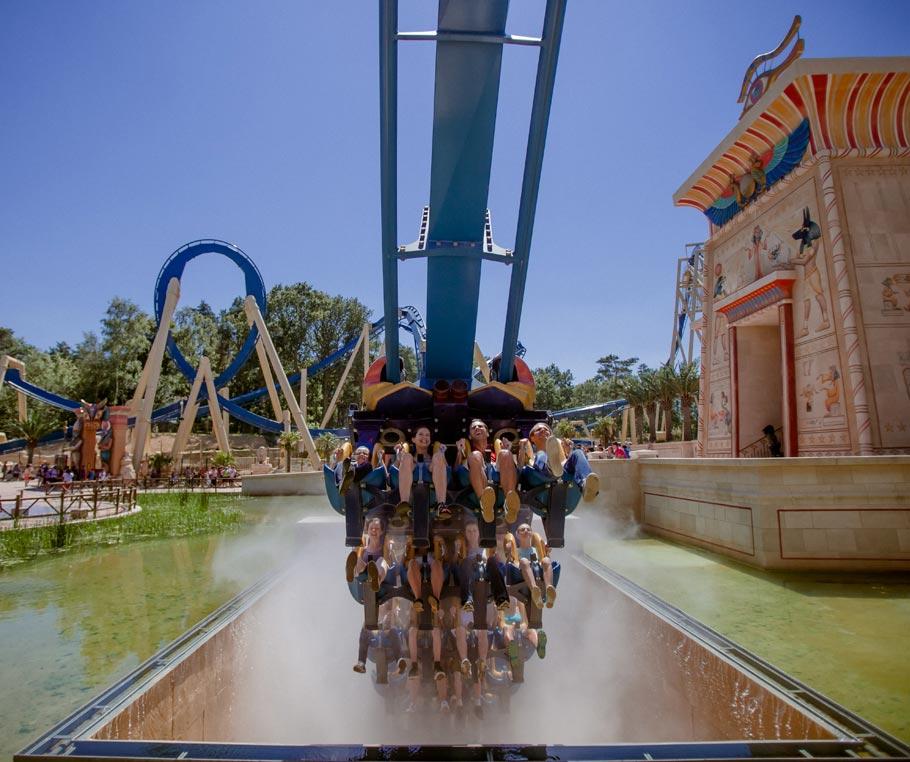
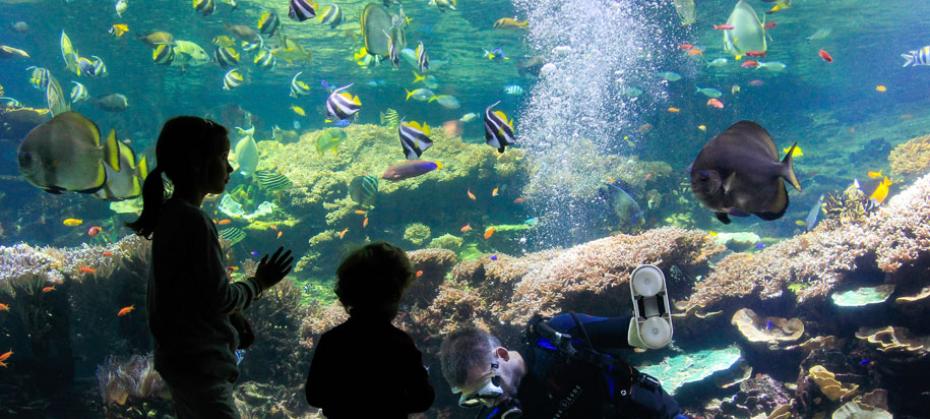 Combine fun and learning at the incredible Nausicaa aquarium
© AS Flament
Combine fun and learning at the incredible Nausicaa aquarium
© AS Flament
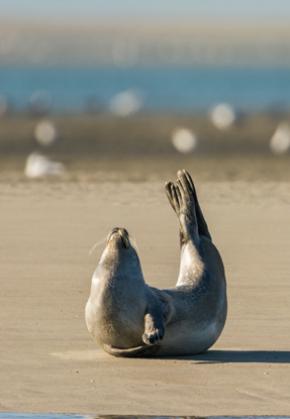 Make new friends during your Somme Bay stopover
© S. Bouilland
Make new friends during your Somme Bay stopover
© S. Bouilland
"Don’t forget the beaches – Berck-sur-Mer has kite-surfing and seal-spotting."
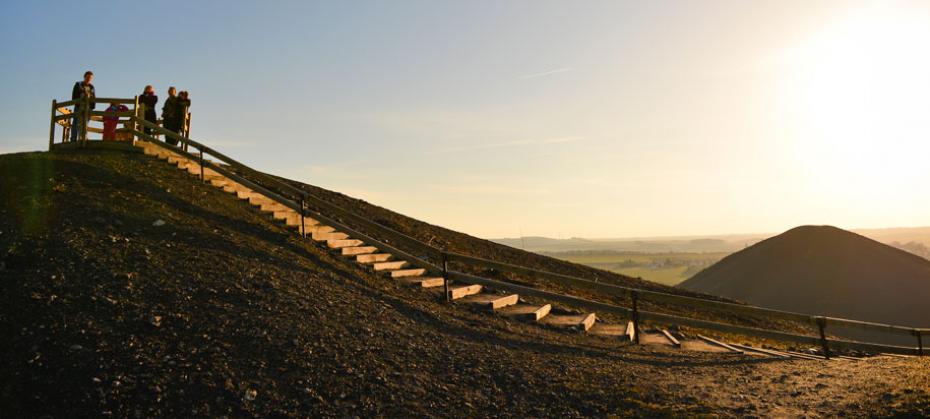 A unique way to stretch the legs, climb the historic mine slagheaps near the Louvre Lens
© yannick-cadart-cd62
A unique way to stretch the legs, climb the historic mine slagheaps near the Louvre Lens
© yannick-cadart-cd62
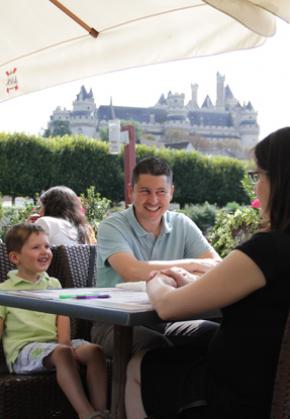 Perfect family day out with a visit to Camelot from the BBC Merlin series
© R.François
Perfect family day out with a visit to Camelot from the BBC Merlin series
© R.François

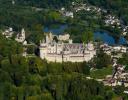
The addition of family roller coaster Pégase to its Ancient Greece area makes Parc Astérix one of things to do in France this summer, whether you’re spending northern france holidays or passing through (the park has its own exit off the A1 Paris–Lille and is also handy for those travelling to or from the ferry / Eurotunnel port of Calais).
French
Cultural
Immersion
Just across the channel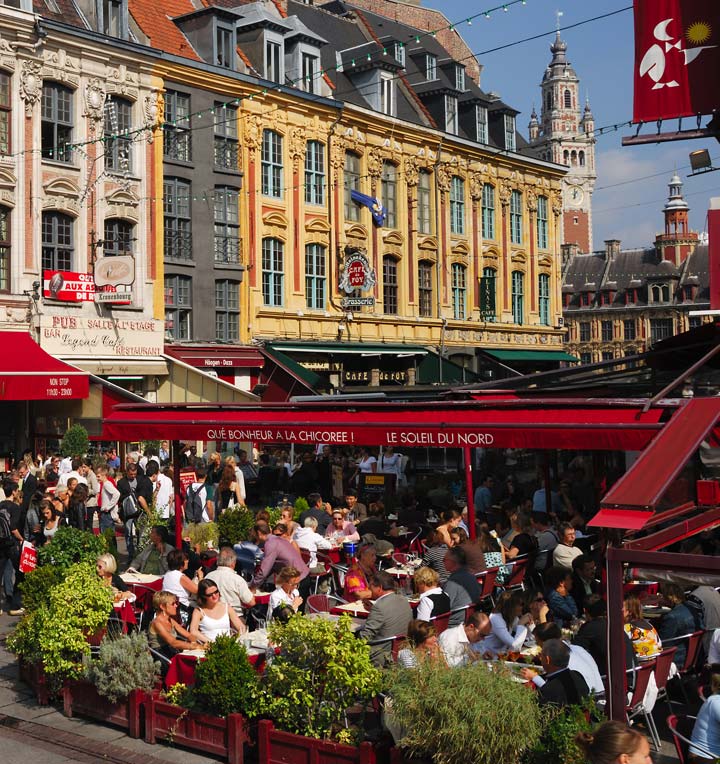 Soak in the French art de vivre in Lille
© Nord Tourisme - R.Soberka
Soak in the French art de vivre in Lille
© Nord Tourisme - R.Soberka
Just a short hop across the Channel, the northern France region is blessed with a rich cultural and architectural heritage that makes it a superb destination for a stimulating weekend getaway.
Many sites here are UNESCO World Heritage sites, including the 104-metre-tall beffroi or bell-tower on Lille’s 1920s town hall, which was inspired by triangular-gabled Flemish houses. The bell-towers of Douai and Arras are also UNESCO listed.
The region has nine cathedrals to discover, too. Among them is Amiens’ UNESCO-listed Gothic Basilique Cathédrale Notre-Dame – France’s largest cathedral, and one endowed with a remarkable stylistic unity. Others are at Lille, Cambrai, Arras, Saint-Omer, Boulogne-sur-Mer, Laon, Beauvais and Soissons.
A new addition to the cultural attractions of the region is the Villa Cavrois in Croix, just outside Lille. An incredible refurbishment project undertaken by the French government to restore a modernist mansion by French architect Robert Mallet-Stevens.
An unmissable site for those visiting the region is Chantilly with its spectacular château housing both lavish royal apartments and a vast collection of antique paintings (within the Musée de Condé). There are also stunning parklands to explore and the fascinating Musée du Cheval in the former Grand Stables, with displays on the history of horses.
Art Deco, which took seed in Western Europe after beginning in France, has a strong presence in the region too. You can see it in everything from seaside villas in Le Touquet Paris-Plage, Dunkirk and elsewhere, to swimming pools (one – at Roubaix – still functional, others turned into cultural venues), train stations and post offices. Saint-Quentin is a good place to see a concentration of Art Deco buildings and features.
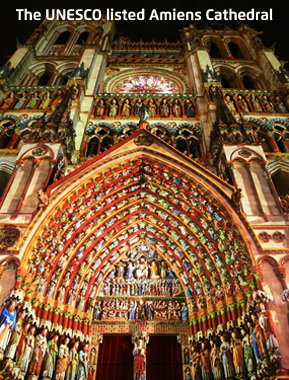
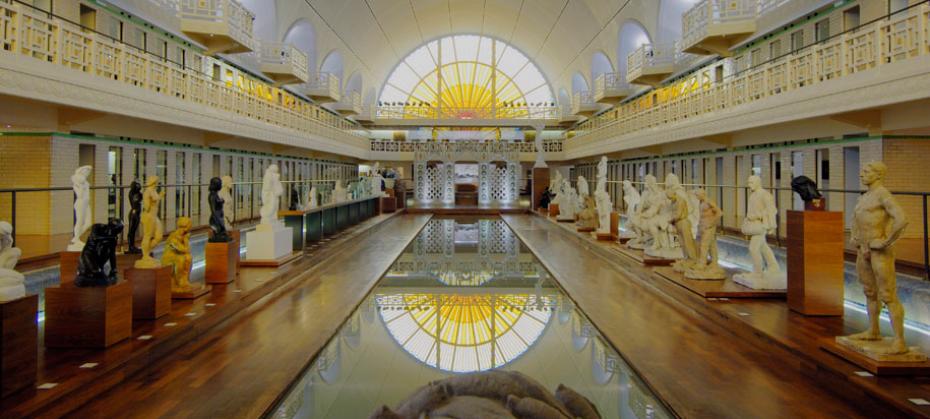 WOW moment guaranteed at the Piscine art gallery in an Art Deco swimming pool
© A.Leprince
WOW moment guaranteed at the Piscine art gallery in an Art Deco swimming pool
© A.Leprince
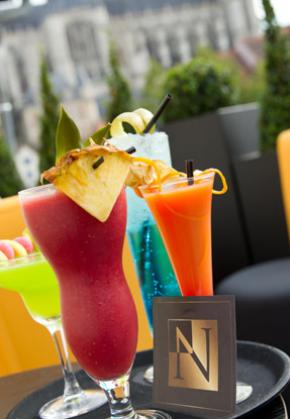 A French aperitif with a view of the UNESCO listed Amiens Cathedral
© AS Flament
A French aperitif with a view of the UNESCO listed Amiens Cathedral
© AS Flament
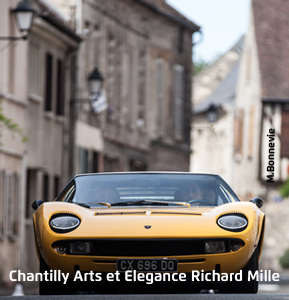
You might like to time your break with one of the many cultural or lifestyle events hosted all around the region, including the Carnaval de Dunkerque (January–April) and Amiens’ Cathédrale en Couleurs sound-and-light show (June–September and December).
September is a particularly lively month, with the Chantilly Arts & Elegance Richard Mille classic car show, the Grande Braderie de Lille flea-market and the Journées Européennes du Patrimoine – the latter offering the chance to visit historical monuments that are often closed to the public the rest of the year.
Practical InformationWith remarkable historic sights and fabulous dining, laid-back Chantilly just north-east of Paris is perfect for experiencing French art de vivre in a setting of incredible natural beauty.
Surrounded by gorgeous forest yet within easy reason of the French capital, Chantilly is compact enough to explore on foot during a leisurely couple’s break yet packed with some of France’s most impressive historic sites, as well as unforgettable places to eat, drink and stay.
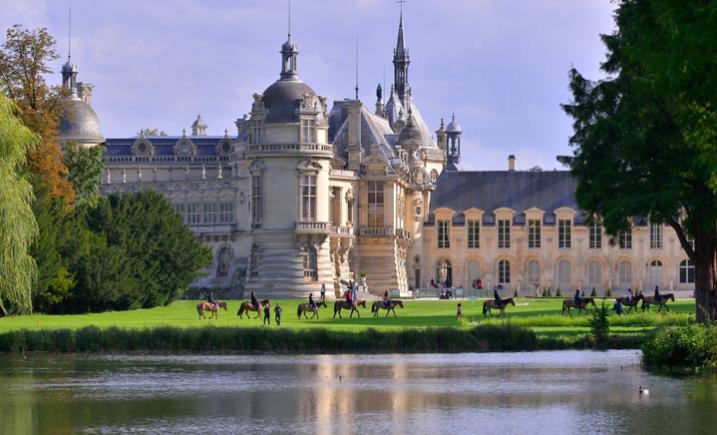 Discover the Chateau de Chantilly with its world class art collection
© N. Bryant
Discover the Chateau de Chantilly with its world class art collection
© N. Bryant
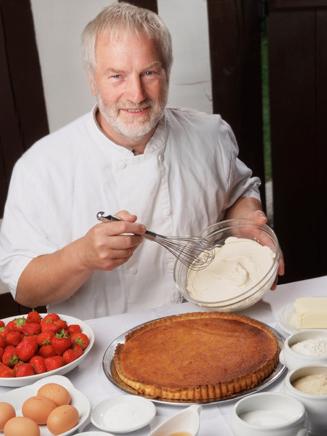 Taste the original Chantilly cream
© comdesimages
Taste the original Chantilly cream
© comdesimages
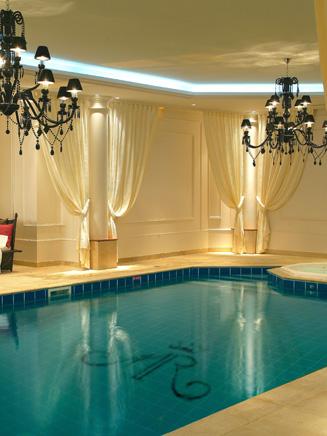 Indulge in a chateau hotel at Chantilly's Chateau Mont-Royal
© tiara-hotel-mont-royal
Indulge in a chateau hotel at Chantilly's Chateau Mont-Royal
© tiara-hotel-mont-royal
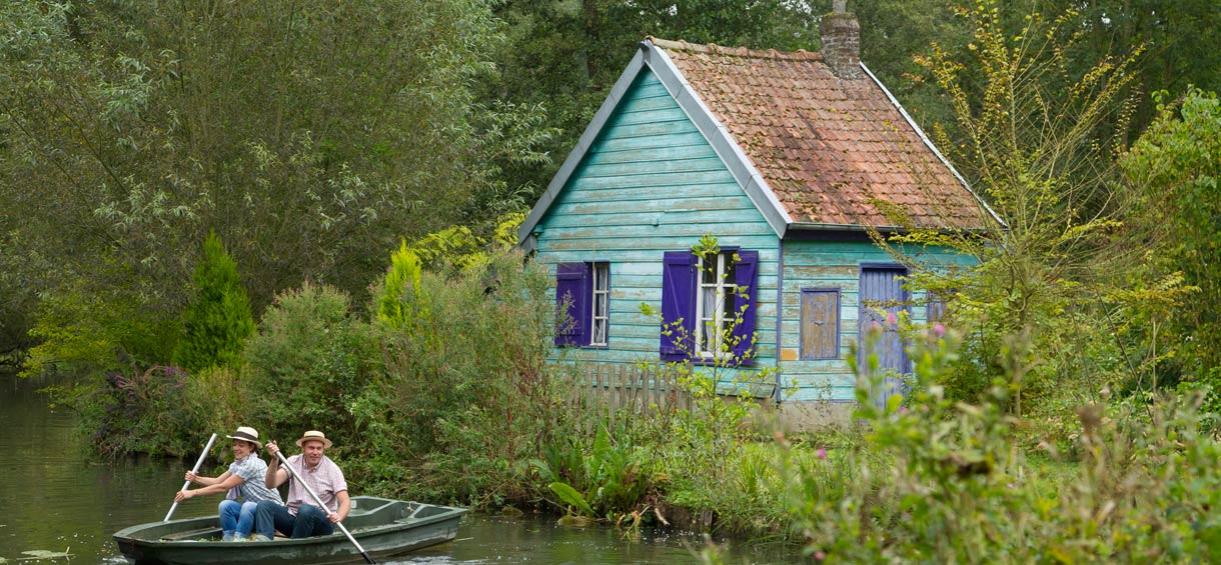
Unusual Amiens.
Canals and French charm
A secret city break, Northern FranceLively yet peaceful, and full of great restaurants with french cuisine, this city halfway between Paris and Calais is home to a host of offbeat sights that make it a charming choice for a romantic weekend break.
A short hop from the Channel ferry ports, Amiens is no ordinary city. At its heart lies France’s largest Gothic cathedral – a UNESCO-listed structure that stuns visitors year-round but that is best viewed at nightfall from mid-June to mid-September and throughout December. During these periods, its main facade with its extraordinary sculptures is illuminated to show the surprisingly bright colours in which it was painted in medieval times. Accompanied by spiritual music, the effect is spellbinding.
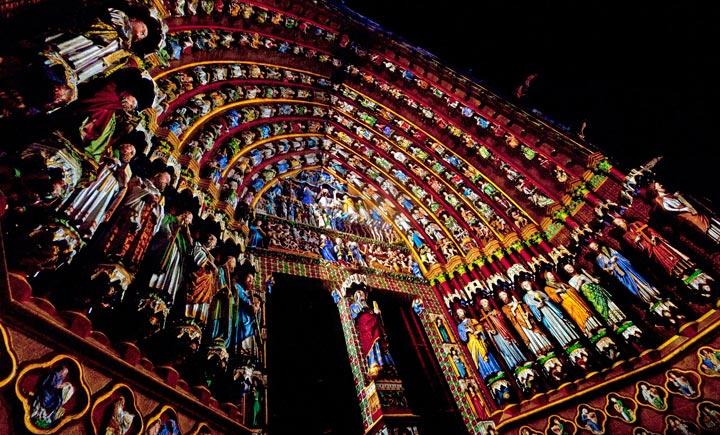 Marvel at the sound and light show projected onto the UNESCO jewel
© L.Leleu
Marvel at the sound and light show projected onto the UNESCO jewel
© L.Leleu
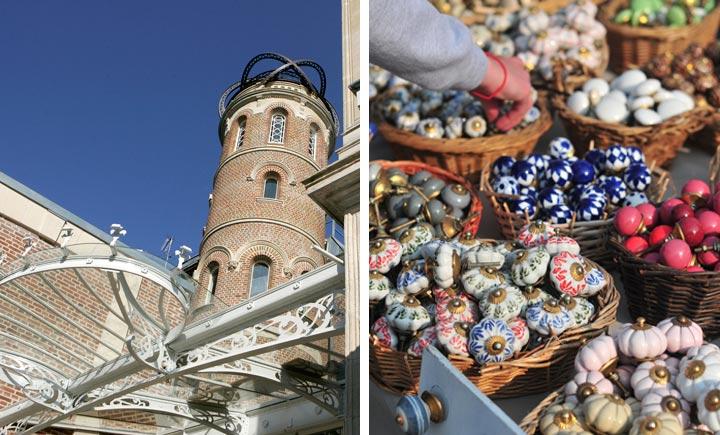 Cultural enrichement in Amiens, the house of Jules Verne and flea markets
© L.Rousselin-amiens-metropole, N. Bryant
Cultural enrichement in Amiens, the house of Jules Verne and flea markets
© L.Rousselin-amiens-metropole, N. Bryant
Artistic trades flourish in Hauts-de-France and continue to make their presence felt on an international stage, making it the perfect destination for couples keen to learn together and perhaps acquire a new skill. For instance, Musée Atelier du Verre in Sars-Poteries runs courses in its state-of-the-art glass studio, and Cristallerie d’Arc in Arques gives you the chance to learn the art of glass-blowing. There are also workshops at the Musée de la Céramique, Desvres.
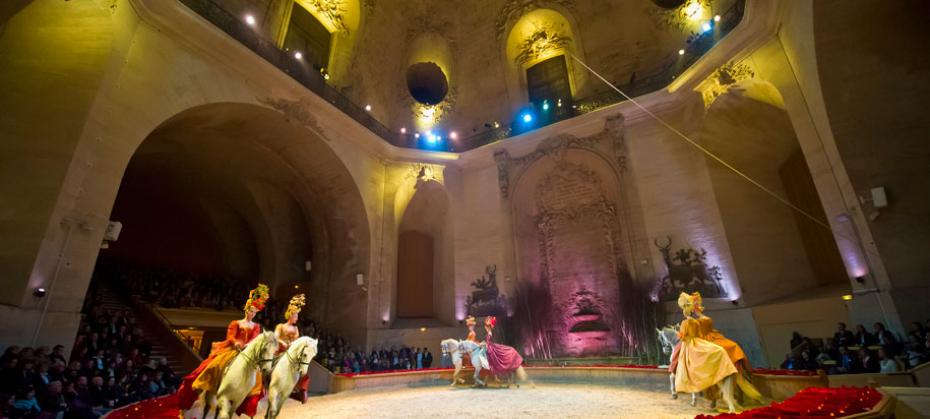 Haute Ecole dressage at the Musée du Cheval in Chantilly, France's equestrian capital
© Guilloux
Haute Ecole dressage at the Musée du Cheval in Chantilly, France's equestrian capital
© Guilloux
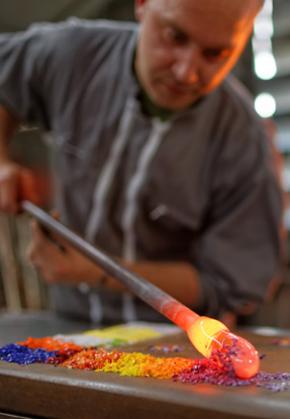 Learn the art of glass-blowing from master artisans
© AMV - Trélon, Site de l'écomusée de l'avesnois. S. Dhote.
Learn the art of glass-blowing from master artisans
© AMV - Trélon, Site de l'écomusée de l'avesnois. S. Dhote.
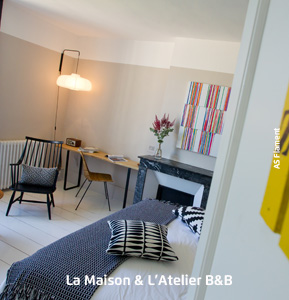 Alternatively, learn about traditional lace-making at La Cité Dentelle Mode de Calais – which also runs workshops – and the Musée de la Dentelle in Chantilly. Did you know ? Kate Middleton's Wedding Dress was made from the lace of Caudry and The stylish bottles holding perfumes from the great perfume houses of France are made in the Glass Valley near the Somme Bay.
Alternatively, learn about traditional lace-making at La Cité Dentelle Mode de Calais – which also runs workshops – and the Musée de la Dentelle in Chantilly. Did you know ? Kate Middleton's Wedding Dress was made from the lace of Caudry and The stylish bottles holding perfumes from the great perfume houses of France are made in the Glass Valley near the Somme Bay.
"Don’t leave Chantilly without popping into Le Boudoir for gourmet treats to bring home."
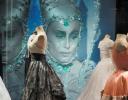
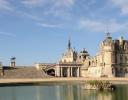
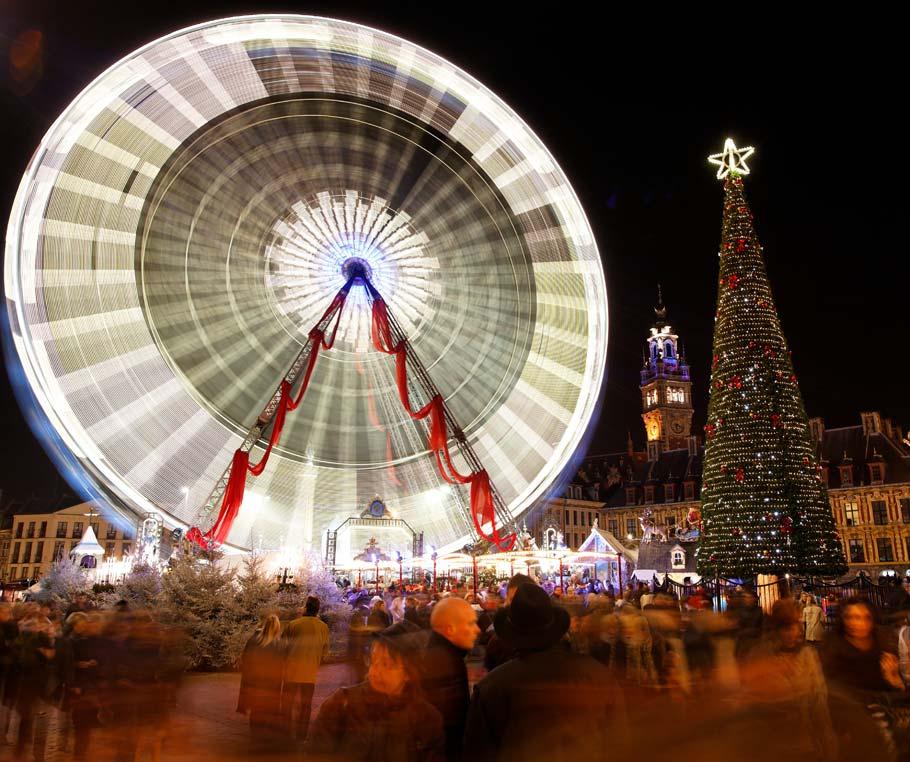
Visiting a French Christmas market is a wonderful opportunity to sample some of the region’s specialities, as well to feast on festive favourites such as mulled wine, waffles, roast chestnuts.
Lille, home to one of France’s largest art museums, the Palais des Beaux-Arts, Hauts de France capital offers culture, heritage and gastronomy just 75 minutes from the Channel.
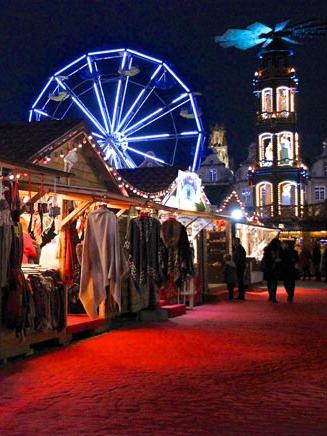 The Village de Noël takes over the Baroque Grand’Place in Arras
© ©Cituation ensemble
The Village de Noël takes over the Baroque Grand’Place in Arras
© ©Cituation ensemble
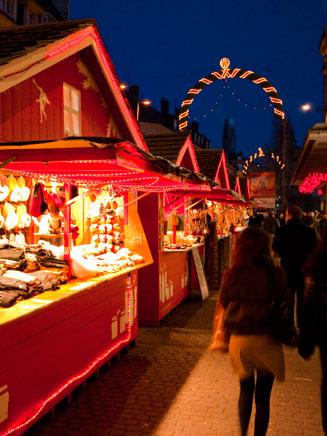 Amiens, the largest Christmas market in northern France
© © CRT Picardie - SBouilland
Amiens, the largest Christmas market in northern France
© © CRT Picardie - SBouilland
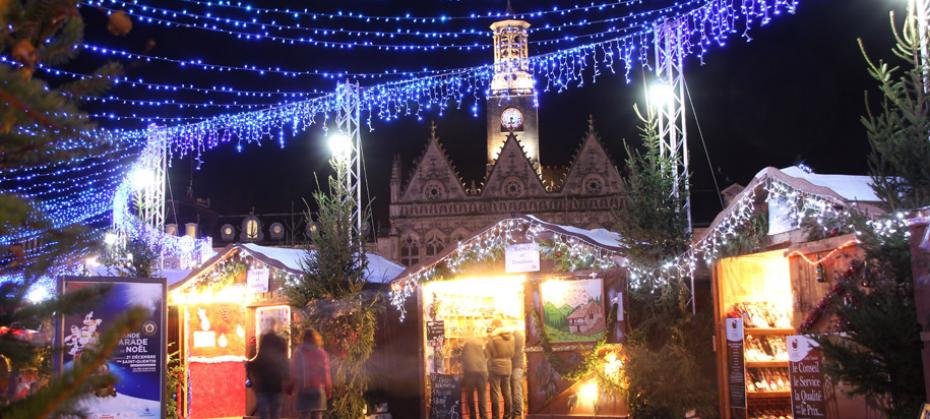 An authentic mountain village in SAINT QUENTIN, best known for its Art Deco architecture
© ©G. Wasikowski
An authentic mountain village in SAINT QUENTIN, best known for its Art Deco architecture
© ©G. Wasikowski
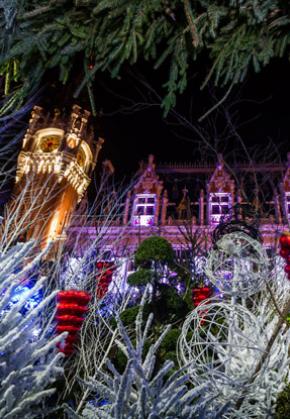 Short Christmas-shopping hop across the Channel, CALAIS has a lively Christmas festival
© ©Ville Calais Fred Collier
Short Christmas-shopping hop across the Channel, CALAIS has a lively Christmas festival
© ©Ville Calais Fred Collier
SAINT-QUENTIN east of Amiens plays host to a Christmas market (3rd Dec 2017 –31st Dec 2018) styled as an authentic mountain village, complete with snow-covered fir trees and around 50 stalls. There are plenty of gifts and crafts, foie gras, Quentins (chocolate with almonds and hazelnuts), tartes au Maroilles (strong local cheese) and champagne to snap up.
With a location that is second-to-none for those making a short Christmas-shopping hop across the Channel, CALAIS has late opening hours during the festive season, as well as a lively Christmas festival (25th Nov 2017– 7th Jan 2018) featuring gospel, kids’ entertainment and fabulous illuminations. The festival embraces a Christmas village with gift-making workshops, a grand Christmas parade with floats peopled by acrobats, elves, snowmen (3rd Dec), and a festive market (8th-17th Dec), with 80 stalls plus storytelling by an elf in Mother Christmas's Cottage. There’ll also be the Magical Forest, with a nativity crèche and kids’ costumes for festive selfies, and World of Toys with its indoor ice rink, 1900s double-decker carousel and Santa’s grotto.
Practical information
One of the most dramatic World War I battles saw the use of massed Mark IV tanks by the British, in an attempt to liberate the town of Cambrai just behind the Hindenburg LIne. Though unsuccessful, it paved the way for the Hundred Days offensives. So important was this battle that Cambrai Day is commemorated on the 20th November by the Royal Tank Regiment.
Meet Deborah, centrepiece of the new Museum of Cambrai 1917
The centenary of the Battle of Cambrai will be marked by the opening of the Cambrai Tank 1917 Museum. Its centrepiece is ‘Deborah’, a British tank uncovered by hotelier Philippe Gorczynski in the grounds of the Château de Flesquières in 1998. The venue will also tell the story of many of the 44,000 British troops wounded, lost or killed in the attack, some of whom are buried in British Hill Cemetery beside the museum.
At Hôtel Le Béatus, owner Philippe Gorczynski, a WWI expert, will happily share his passion for the subject. Having spent childhood holidays in the area, he devoted years of painstaking research to locate ‘Deborah’."
Cultural Discovery in and around Cambrai
Challenge your perspective with a visit to the Cambrai Musée des Beaux-Arts, with works by Ingres and Rodin; the Matisse Museum, with France’s largest collection by the painter; and Musée de la Dentelle in Caudry where the lace on Kate Middleton’s wedding dress was made. Less than an hour’s drive away is the Louvre Lens, with meticulously chosen works from its big sister in Paris. Dining options are aplenty. Do try the Château de la Motte Fénelon’s restaurant Le 109, with dishes that include veal caramelised in Belval Abbey honey, with sand-grown carrots and white-onion sauce. Let yourself be tempted by boulangeries, farmshops and markets, and bring a piece of France home with you from the Halles Cambrésiennes or Bétises de Cambrai Afchain (boiled sweets). Maroilles CheeseIf you fancy a slower pace, Mormal Forest, damaged in the war, is a peaceful walking spot, with roe and red deer and boar. Pretty Maroilles, home to one of France’s most pungent cheeses, hosts a fleamarket in June and a Fête Flamiche in August (flamiche is a tart). Practical Information.
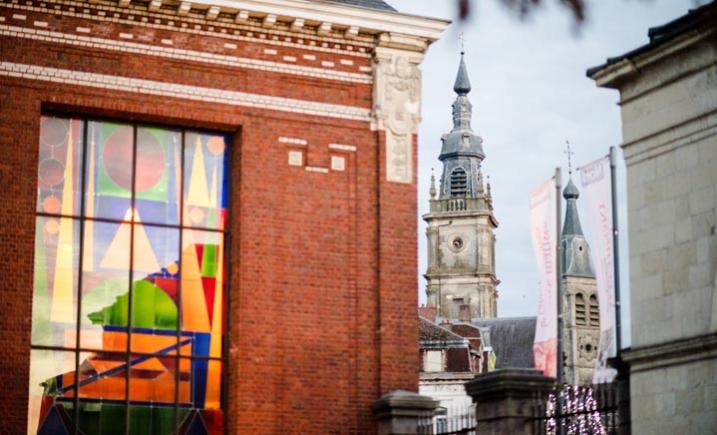 Visit the Matisse Museum, where Henri Matisse himself designed the layout of his works and donated 82 paintings in 1952
© office de tourisme du cambresis
Visit the Matisse Museum, where Henri Matisse himself designed the layout of his works and donated 82 paintings in 1952
© office de tourisme du cambresis
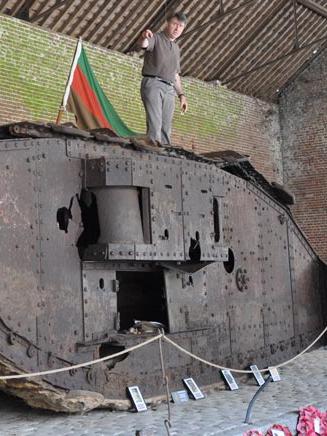 Philippe Gorczynski’s passion for history led him on a long quest to find Deborah D51
© office de tourisme du Cambrésis
Philippe Gorczynski’s passion for history led him on a long quest to find Deborah D51
© office de tourisme du Cambrésis
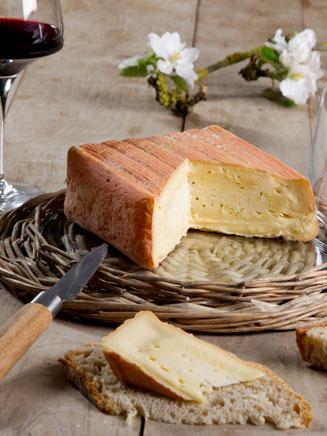 Whilst visiting the region, sample local Maroilles cheese
© CRT Picardie/ AS Flament
Whilst visiting the region, sample local Maroilles cheese
© CRT Picardie/ AS Flament
The Past Lives On
World War I
Learn about the war and its impact on today"Thiepval Visitor Centre has a database to try to track down ancestors."
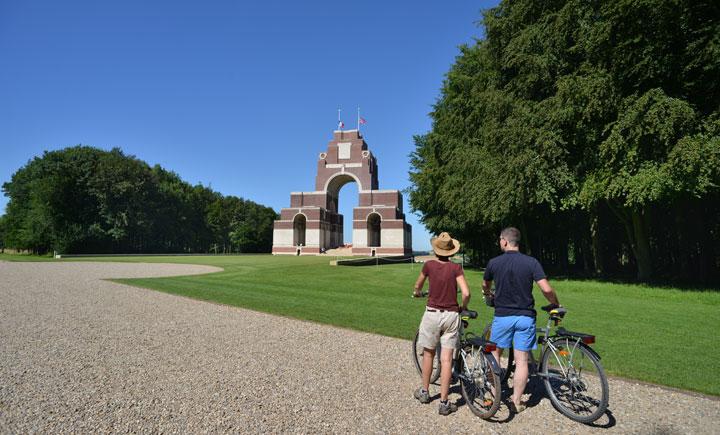 Thiepval Memorial inscribed with the name of 72 195 soldats whose bodies have never been found.
© N. Bryant
Thiepval Memorial inscribed with the name of 72 195 soldats whose bodies have never been found.
© N. Bryant
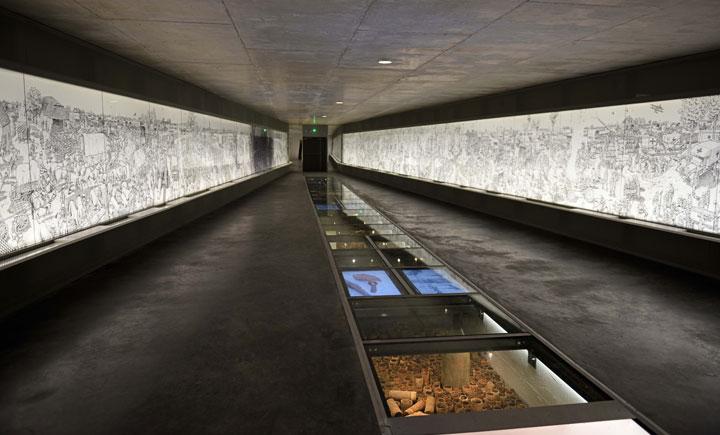 Thiepval's new memorial center is home to a unique Joe Sacco fresco detailing the first day of the Battle of the Somme.
© P.Brunet
Thiepval's new memorial center is home to a unique Joe Sacco fresco detailing the first day of the Battle of the Somme.
© P.Brunet
Meanwhile, from April to November, the Historial de la Grande Guerre in Péronne is hosting ‘Alexandre Zinoview (–1977): le Théâtre de la Guerre’, showcasing the Russian painter who joined the French Foreign Legion and painted his experiences as a a serving soldier, machine-gunner and stretcher-bearer.
Practical information
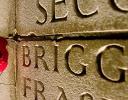
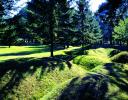
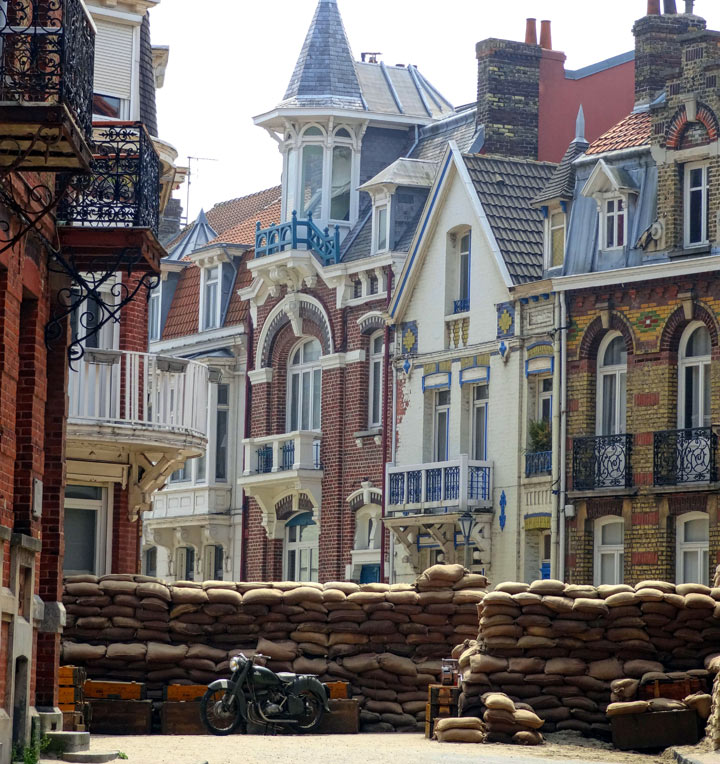 Filming of Christopher Nolan's film 'Dunkirk' took over the peaceful coastal town
© E. Roose
Filming of Christopher Nolan's film 'Dunkirk' took over the peaceful coastal town
© E. Roose
For the duration of filming, the town and the Dune Marchand nature reserve, ever popular with birdwatchers and hikers were taken over by extras, film-sets and military vehicles disrupting the peaceful atmosphere.
The French and British armies are surrounded by 80,000 German soldiers. While groups of allied soldiers are organised to hold back the German advance, the largest ever maritime evacuation in history, Operation Dynamo, takes position. Nearly 338,000 soldiers waiting on the beach are finally transported back to England thanks to a fleet of “little ships”, simple fishing boats and pleasure craft which came to assist military vessels.
a heritage site with UNESCO-listed belfries, seafront villas and a working harbour. Dunkirk is also the ideal place to escape from daily routines and revitalise the spirit. Enjoy the unique atmosphere of its Carnival, a colourful tradition with several lively music events and parades taking place over 3 months. A warm welcome can also be found in the town’s bars and restaurants, ideal for sampling local specialities: mussels & chips, Potjevleesch (3 meat terrine). Or for the sweet tooth, the Sugar tart and waffles from Dunkerque. When in Flanders, nothing beats a pint of local beer at the brewery! When in Flanders, nothing beats a pint of local beer at the brewery!
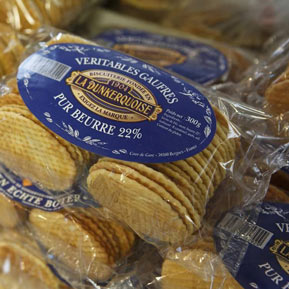
© Biscuiterie la Dunkerquoise
Northern France is home to the greatest number of British memorial sites on the French Western Front in World War I and hence a place of pilgrimage for everyone from families on the trace of a missing loved one to history buffs and school groups who want to learn about the terrible conflict and its impact on the world today. Among the region’s heroes, British Army officer, medical doctor and Olympic athlete Captain Noel Godfrey Chavasse from Oxford was the only man awarded the Victoria Cross twice in the First World War, once for trying to save comrades in the Battle of Guillemont between Amiens and Arras. He died of his wounds in 1917.
On 9th April 2017, representatives from several countries came together in the Arras region to commemorate the centenary of the start of the Battle of Arras.
The Battle of Arras was a British led offensive on the Western Front in April 1917. Given the extreme danger faced by soldiers in preparing this offensive, a vast underground network of tunnels below the town was used for its preparation. Traces left by the soldiers who went into battle on the morning of 9th April 1917 can still be found in the cool damp of Wellington Quarry’s underground tunnels. It’s hard to imagine the town’s state of ruin in 1918 as one strolls beneath the arches around the two main squares. Reconstruction works restored Arras’ town-hall and belfry to their original splendour, as well as the Flemish baroque-style houses around the squares. Sitting at one of the cafés on Place des Héros is the ideal way to soak in the unique architecture and atmosphere. To the North of Arras, the Canadian National Vimy Memorial is a peaceful site, shaped by its terrible past. Children enjoy being taken down into the preserved network of WW1 trenches, where they are welcomed by young volunteer guides from Canada, who explain the preparations for the assault launched by the Canadian forces on 9th April 1917.
Europe’s two highest slag heaps, in Loos-en Gohelle, offer a panoramic overview of the UNESCO-listed mining landscape in Nord-Pas de Calais and, in good weather, Lens (with its Bollaert-Delelis stadium and the Louvre-Lens Museum, showing works from the Paris Louvre) and even as far as Lille
Practical Information
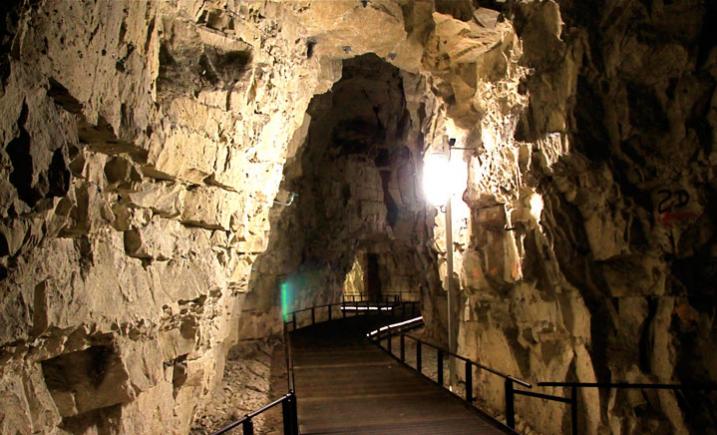 Visit the network of underground tunnels used by allied troops
© Cituation-et-ensemble
Visit the network of underground tunnels used by allied troops
© Cituation-et-ensemble
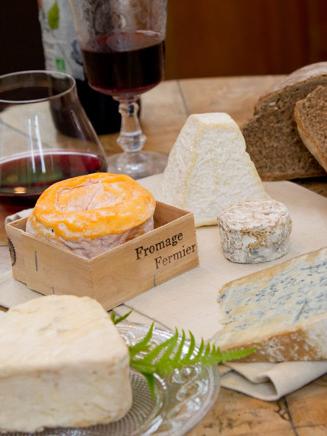 Visit an underground cheese maturing cave in the heart of Arras
© AS Flament
Visit an underground cheese maturing cave in the heart of Arras
© AS Flament
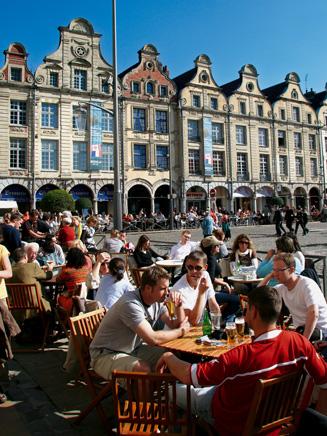 Enjoy an afternoon drink in the sun in Arras' main square
© Cituation-et-ensemble
Enjoy an afternoon drink in the sun in Arras' main square
© Cituation-et-ensemble
Created by David Austin in 2004 for the centenary of the Entente Cordiale, the five-petalled Rose of Picardy® takes its name from a 1916 song said to be based on a love affair in France, and often sung by British soldiers as they enlisted for the Front. A song from a legend... The Rose of Picardy® was written by Frederic Weatherly - a British lawyer however prolific poet. It can be seen at the Abbaye de Valloires, Château Fort de Rambures, Abbaye de Chaalis, Jardin des Ifs and Jardins de LY. Some of these gardens have lovely restaurants and/or tea-rooms – notably the Jardin des Ifs in Gerberoy (one of the most beautiful villages in France) and Abbaye de Valloires with its graden roses. One of the best places to stay close to the latter is the Domaine de Célestins near the coast, with stylish B&B rooms and gîtes, plus a spa.
Let the protected green areas of Hauts-de-France restore you and put you back in touch with your body and its natural rhythms – as well as help you to renew your connection with your partner. Large swathes of this region remain free of urbanisation, and many of them are protected natural reserves too – making this the perfect destination for couples who need to get away from it all and carve out some quality time for themselves. Such spaces include the Baie de Somme – one of the world’s loveliest bays, whose seemingly endless horizons and wealth of wildlife (including a colony of harbour seals) are best discovered via a guided nature walk with a local expert. Soak in breathtaking views (and fresh air galore) from the Deux-Caps, Boulogne-sur-Mer’s ramparts, the cliffs of Mers-les-Bains and Bois de Cise, and Vaux-sur-Somme’s viewing platform. In many places you can glean insider glimpses of local life courtesy of English-speaking ‘greeters’ such as Frédéric Legris, who will take you to see the house of his market-gardener grandparents in the UNESCO biosphere reserve of the Marais Audomarois.
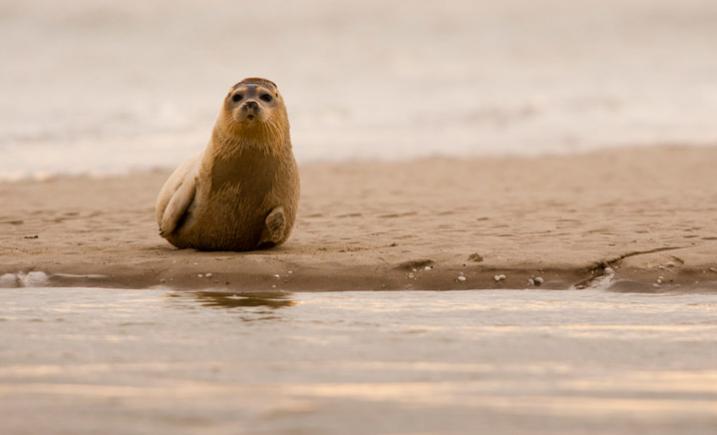 Northern France's coastline is filled with wildlife such as its colony of seals
© N.Bryant
Northern France's coastline is filled with wildlife such as its colony of seals
© N.Bryant
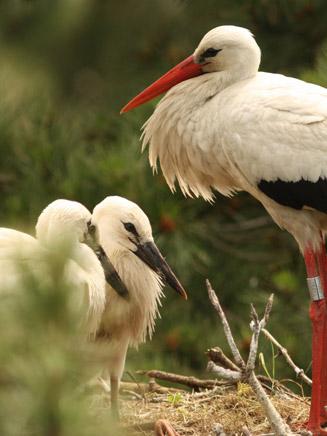 Spot birds which are difficult or impossible to see in the UK
© domaine-du-marquenterre
Spot birds which are difficult or impossible to see in the UK
© domaine-du-marquenterre
 Take in glorious views around every corner
© N.Bryant
Take in glorious views around every corner
© N.Bryant
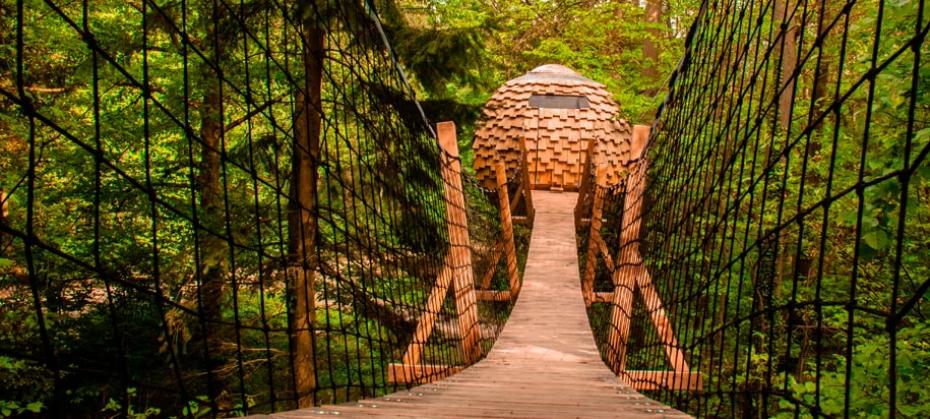 Natural immersion - Sleep up in the trees
© B.Didier
Natural immersion - Sleep up in the trees
© B.Didier
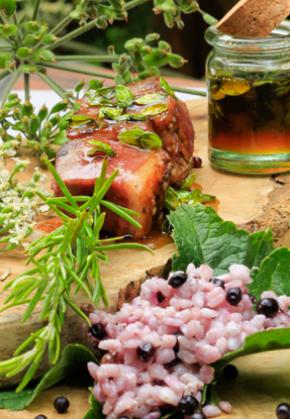 Healthy delights from garden to plate at the Jardin de Valloires
© AS Flament
Healthy delights from garden to plate at the Jardin de Valloires
© AS Flament
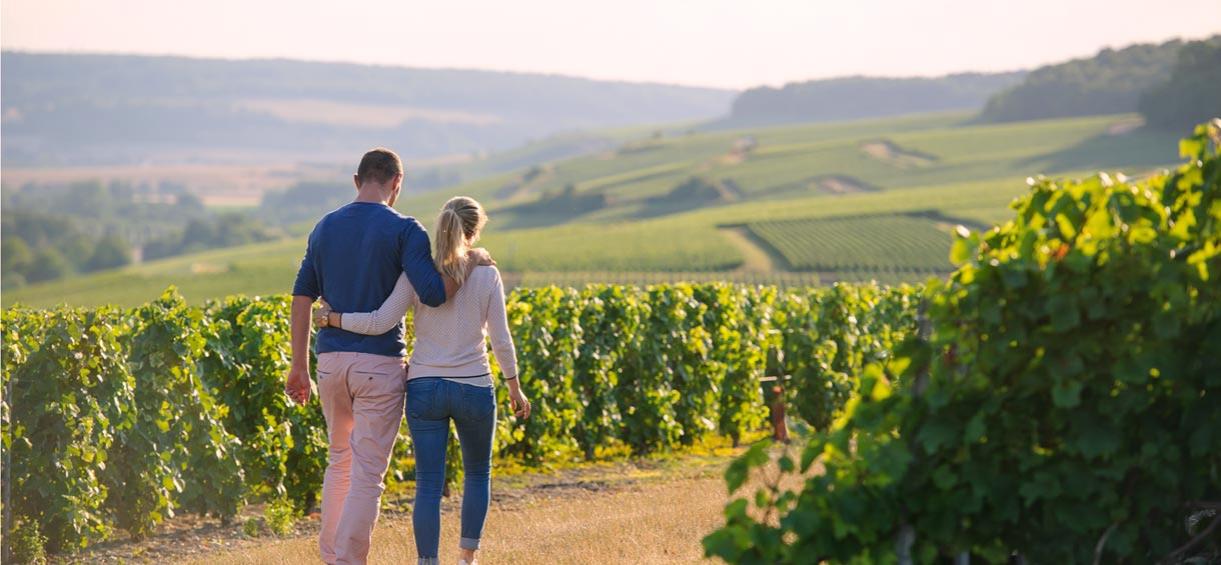
The Champagne Trail.
A Taste of French Art de Vivre
Spend quality time together on a couple’s break in a romantic setting where life runs at a more leisurely pace, discovering local gourmet delights as well as lovely countryside and gardens.
Following the Champagne Route through the Aisne department near Reims and Paris brings you into contact with both large- and small-scale producers. Along the way, you’ll discover traditional little villages, Romanesque churches, châteaux and botanical gardens tucked amidst the rolling vineyards and woodlands. Blessed with the ideal temperatures, rainfall and sunshine
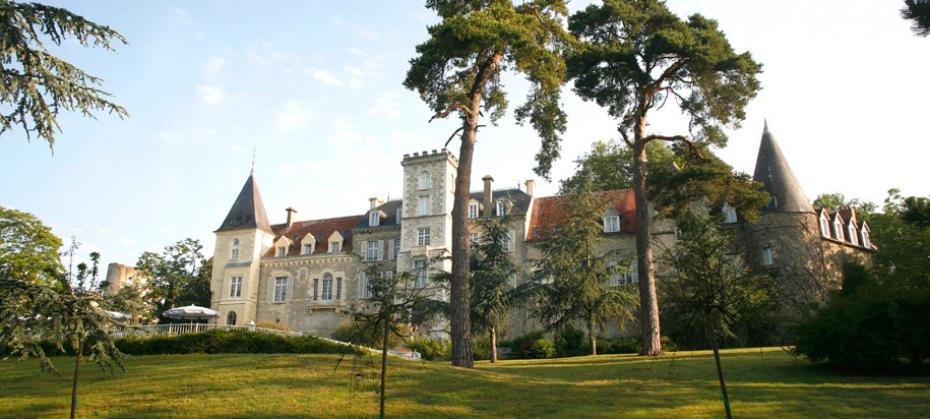 Relax and rejevenate at the 5 star Chateau de Fère
© E. Brenckle
Relax and rejevenate at the 5 star Chateau de Fère
© E. Brenckle
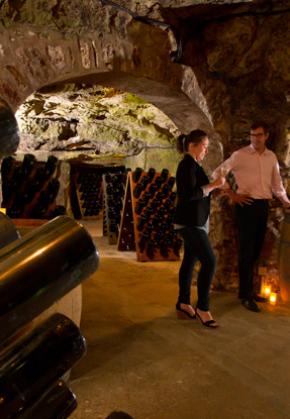 Visit the Champagne caves and meet the local producers
© AS Flament
Visit the Champagne caves and meet the local producers
© AS Flament
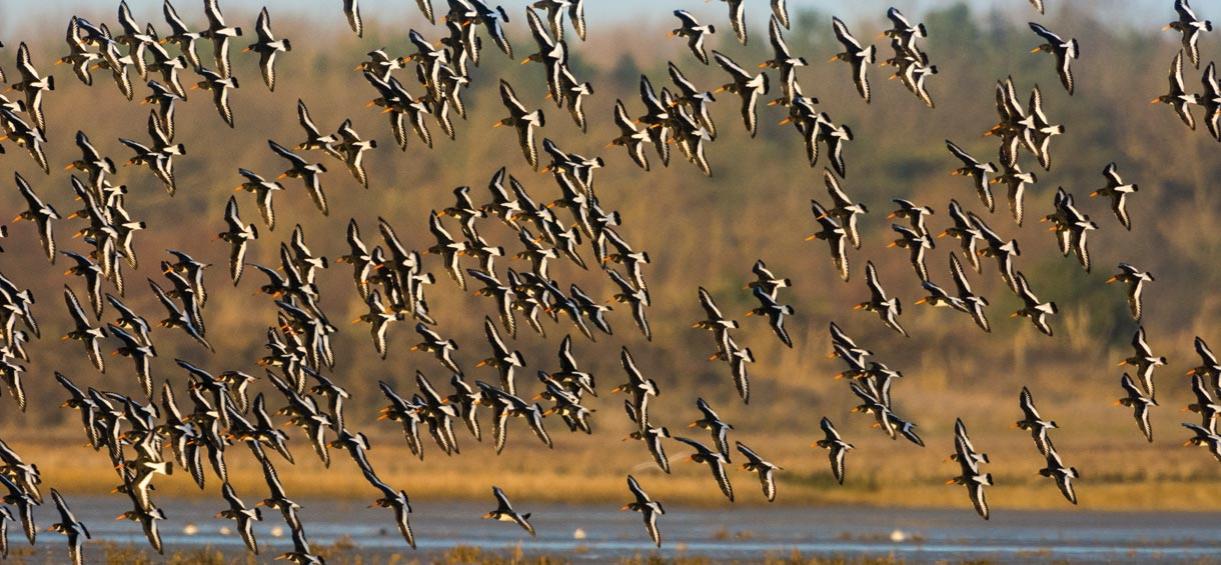
Birds
North France’s special birds:
see great species hardly ever seen in the UK!With its extensive protected areas and habitats, northern France has several bird species not found in Britain as well as many which are difficult to see on our shores – and all within a short drive of your ferry or the Channel Tunnel.
The birds are obvious as soon as you set foot on French soil, with Crested Larks and Zitting Cisticolas near the Calais Ferry terminal and many seabirds around the channel on the way in. And there is even better just minutes along the coast, with miles of dunes and marshes alive with birdsong as Savi and Melodious Warblers - at Platier do L’Oye or Guines Marsh - or good numbers of Bluethroat at the Etangs de Romelaere near St Omer.
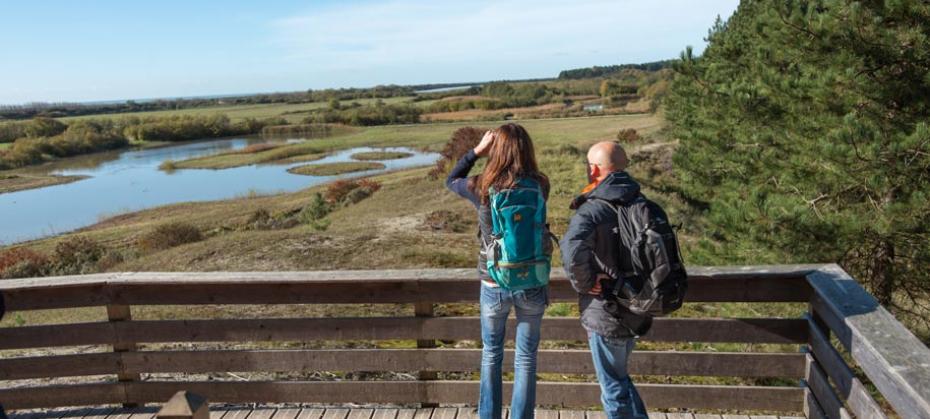 Visit one of France's key ornitological sites, the Parc du Marquenterre
© N. Bryant
Visit one of France's key ornitological sites, the Parc du Marquenterre
© N. Bryant
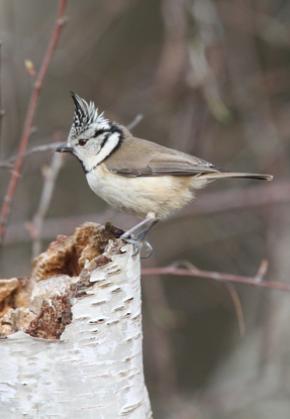 Crested Tit is common in the Somme Bay's hinterland
© Parc du Marquenterre
Crested Tit is common in the Somme Bay's hinterland
© Parc du Marquenterre
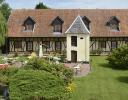

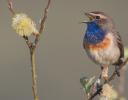

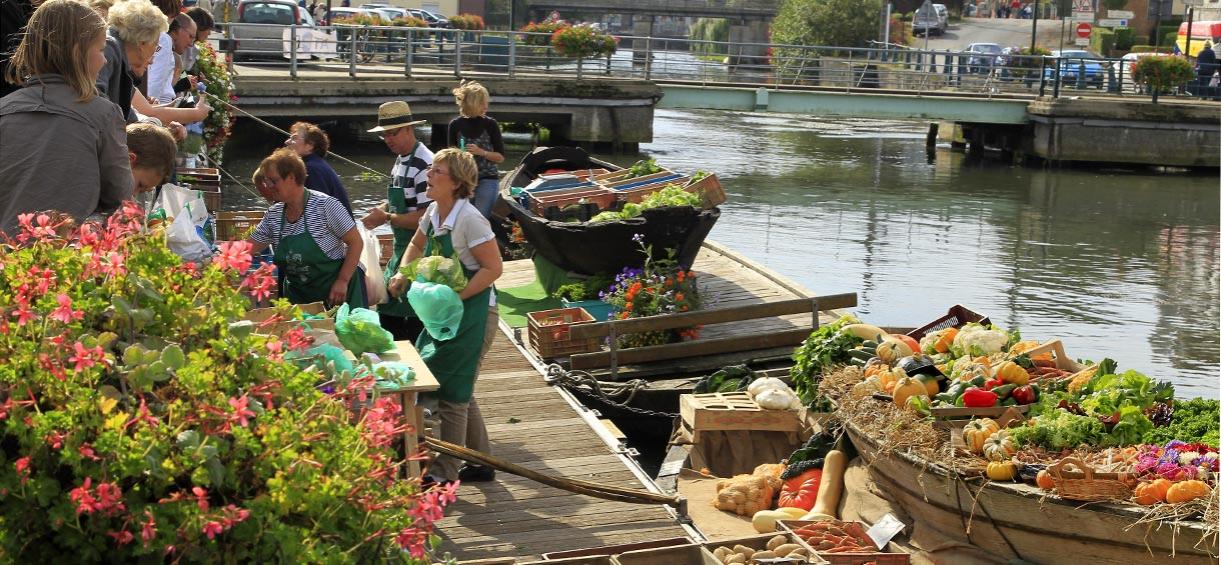
Audomarois Marshes.
French market gardens by boat
Visit a UNESCO listed atmospheric wetlands only 40 minutes from Calais and immerse yourself in protected local landscapes and traditions, and learn about authentic ways of life.
The UNESCO-listed Marais Audomarois includes Saint-Omer – a city rich in art and history – and France’s only remaining cultivated wetland, with about 40 market gardeners. It’s a calm place to escape daily life and see sustainable consumption in action. Hire electric bikes or head to the the Maison du Marais Saint-Omer to ride a bacôve – a flat-bottomed boat used to transport vegetables, handmade locally.
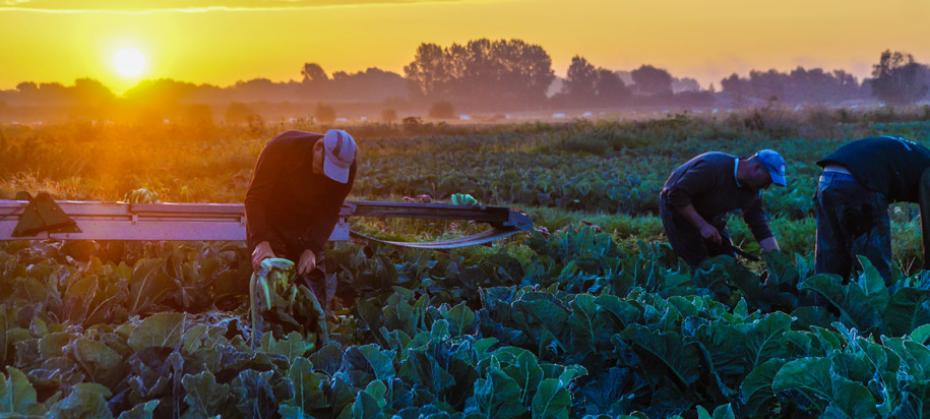 Floating market gardens supply local restaurants
© OT St Omer. P Hudelle
Floating market gardens supply local restaurants
© OT St Omer. P Hudelle
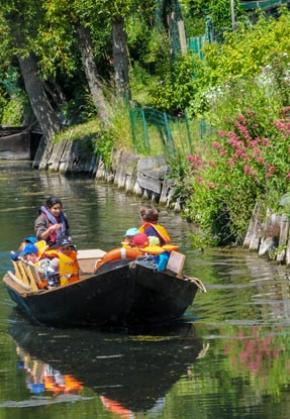 Visit the floating gardens in a peaceful boat ride
© OT St Omer. P Hudelle
Visit the floating gardens in a peaceful boat ride
© OT St Omer. P Hudelle
English-speaking ‘greeters’ will chat to you about their trades.
"Frédéric Legris, son of a market gardener, regales visitors with anecdotes and recipes."
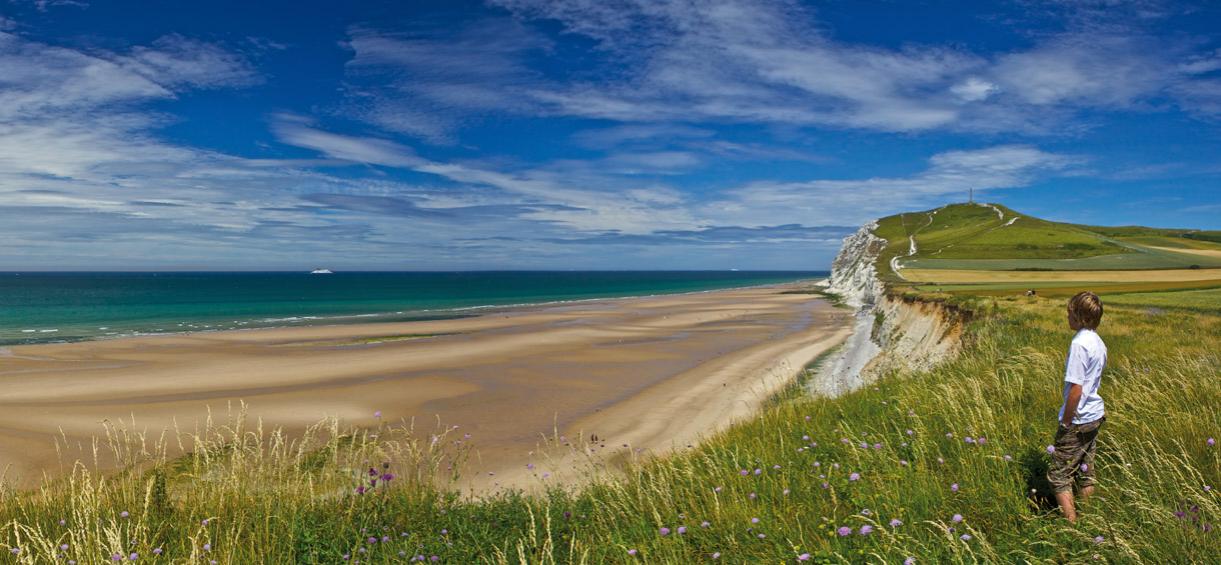
Discover Deux-Caps.
A Family Nature Break
A New View of the British CoastEscape from routine and spend time together at a nature reserve just across the Channel. Learn new things and get a different perspective on the UK coast – plus lungfuls of fresh seaside air.
Together comprising the Grand Site des Deux Caps, Cap Gris-Nez and Cap Blanc-Nez are the closest points in France to the UK coast. As well as offering the chance to see your country from a new angle, it’s a fabulous place to bring kids for clifftop walks and fresh air within minutes of Calais ferry port. Deux Caps has an otherworldly feel while being within easy reach of seaside and inland villages where you can enjoy seafood fresh from the boats and get a great night’s sleep in family-friendly accommodation.
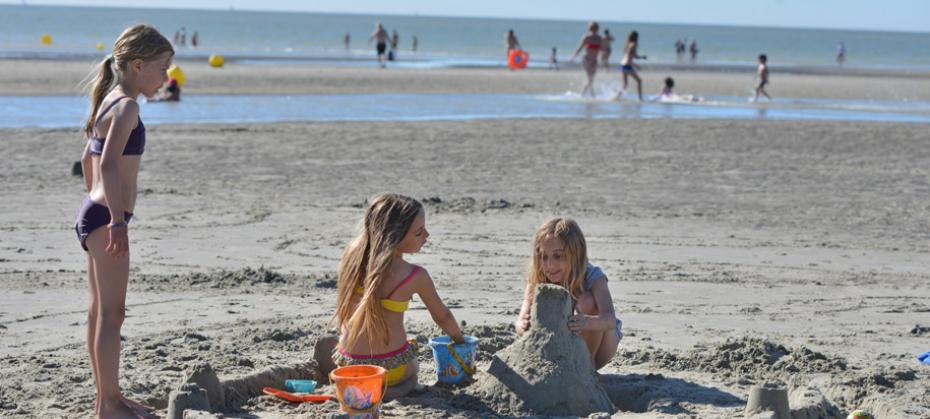 Family fun on northern France's safe, sandy beaches
© N. Bryant
Family fun on northern France's safe, sandy beaches
© N. Bryant
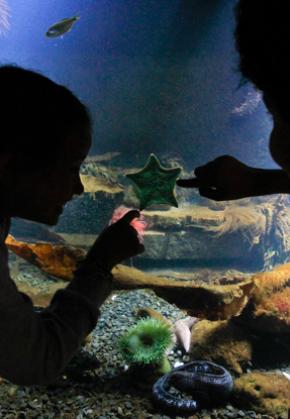 The perfect outing for learning together, Nausicaa aquarium
© AS Flament
The perfect outing for learning together, Nausicaa aquarium
© AS Flament
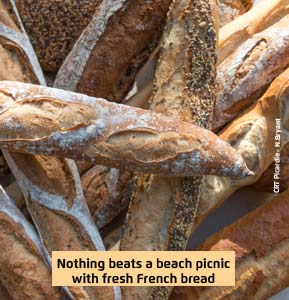 Fun and Learning
Fun and LearningThe UK was joined to the Continent until the last Ice Age, so Deux Caps shares some plants and wildlife with the UK while having a few that are distinct.
Hugues Retaux, guide at Eden 62, loves the cross-Channel views from the Motte du Bourg, a former sea-cliff overlooking the Tardinghen marshes between Gris-Nez and Blanc-Nez.
Find out more at the Maison du Site des Deux-Caps at Audinghen, with displays, guided walks and bike hire. Among the things you’ll learn are how humans including fishermen and shepherds are helping maintain Deux Caps.
